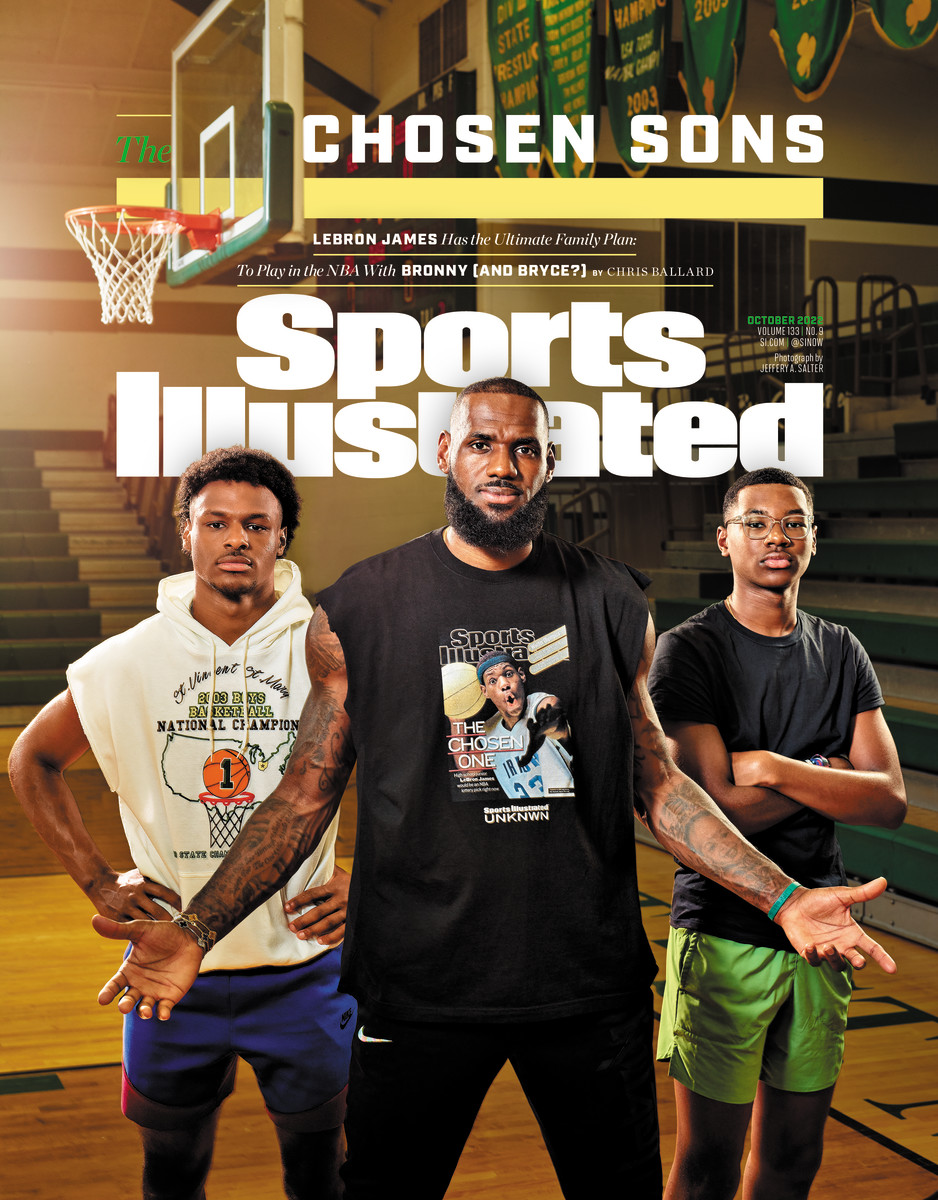Reviewing LeBron James's five-year dominance of the Eastern Conference

In the coming week, LeBron James will make his fifth straight trip to the NBA Finals—a testament to his incredible performance, ability to elevate the play of his teammates, and run of good health. No two of those Finals runs were alike; each was marked by its own challenges and matchup progression. With that in mind, we look now to the unique postseason complexion of every Finals push in LeBron’s five-year dominance of the Eastern Conference.
2011 (Miami Heat)
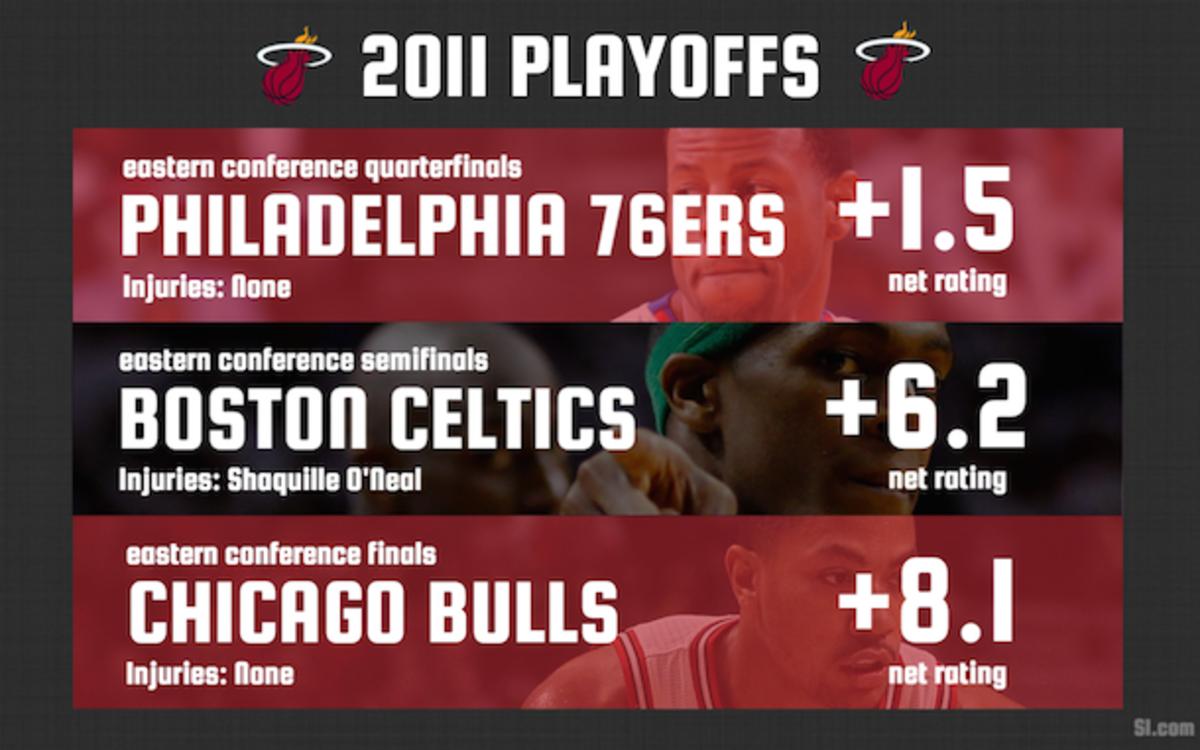
James’ first year in Miami proved to be his most trying. The regular season was waged in fits and starts. Erik Spoelstra had yet to adapt his team to the model of spacing they would eventually become, relying instead on far more traditional lineups. Either Zydrunas Ilgauskas, Erick Dampier, or Joel Anthony started every game for Miami, standing in the way of a more modern sensibility. James, Dwyane Wade, and Chris Bosh were still feeling out their own internal dynamic, and in their first postseason together they had to fight their way through a Chicago team with the best defense in the league and Derrick Rose, the recently crowned MVP.
Those 2010-11 Bulls were the single best opponent by net rating that LeBron would meet in the Eastern Conference for five years. They were a well-balanced team with a deep bench led by a genuine superstar. Against James and the Heat, though, those Bulls couldn’t last more than five games. Miami calibrated after a Game 1 win to trap Rose, feed Bosh, and win each of the next four games by playing the kind of centered basketball expected of a contender. That Chicago team was a test—one James and his teammates passed by banding together for the sake of intelligent execution.
- MORE NBA: Cavs closer to title | Playoff reform needed | Finals schedule
2012 (Miami Heat)
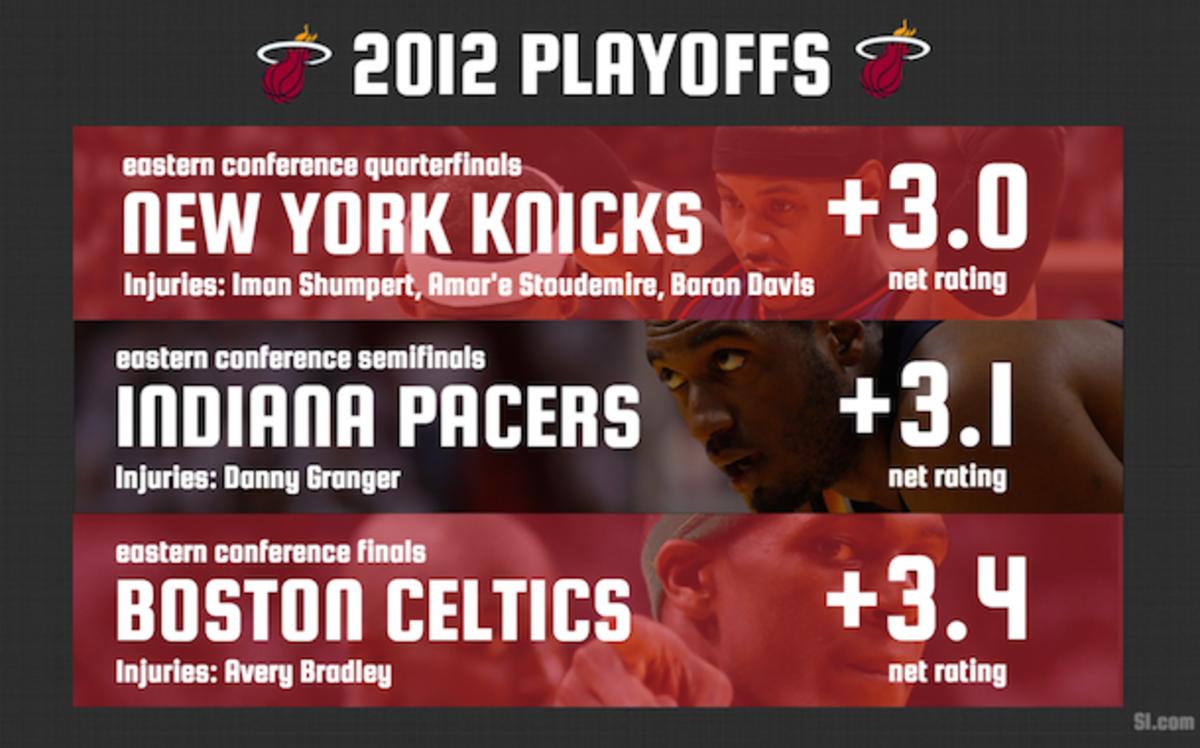
The scramble of the post-lockout season created a path for the Heat wrought with series-to-series balance. Rose’s knee buckled in the first round and the Bulls along with him. That left Indiana (that season’s 3rd seed) and Boston (4th) as the highest-ranked opponents on the board, and the playoff bracket broke in a way that forced Miami to play through both of them. The former famously took a 2-1 advantage in their second-round series against the Heat just as Bosh had ducked out of the series with an abdominal injury. It was then that everything changed; Shane Battier assumed Udonis Haslem’s role in the starting lineup in Game 4 and the Heat, now able to stretch Indiana’s defense and create driving lanes, didn’t lose another game in the series.
Report: Cavaliers' Anderson Varejao won't be activated for NBA Finals
Boston would push Miami to seven games in a series that had no business going as long as it did. Rajon Rondo was his best self. It was in that series that the mythology of ‘Playoff Rondo’ crystallized, his 20.9 points and 11.3 assists per game giving new life to a Celtics offense that had ranked among the league’s worst in the regular season. Boston scored shockingly well through the series but ran out of steam in Game 7—just in time for Bosh’s return to form to push Miami over the top.
2013 (Miami Heat)
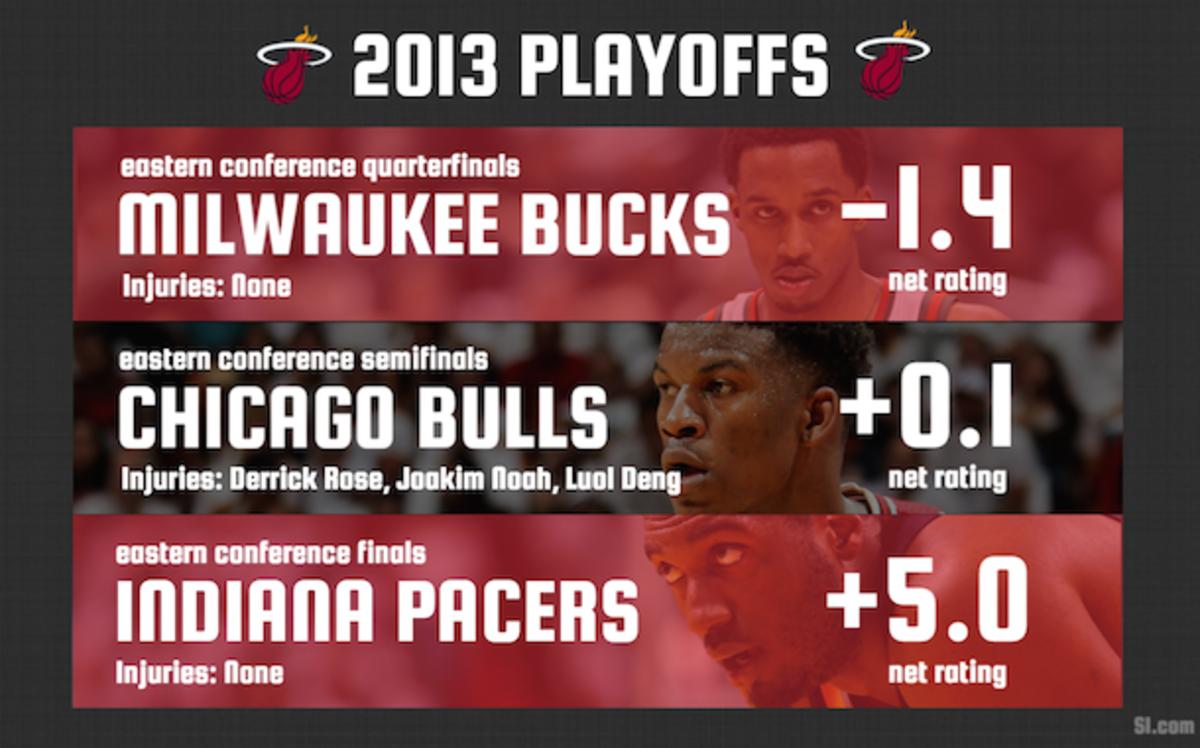
The first two beats of the Heat’s waltz through the East in 2013 came easily. For starters, Milwaukee—the NBA’s 18th-best team by both record and net rating—rated as the single worst opponent James encountered in the East during this five-year stretch. Brandon Jennings predicted the Bucks would win in six. They only lasted four games, all decided by double-digits. Miami continued on to play Chicago without Rose, during Luol Deng’s terrifying spinal tap complications, and while Joakim Noah attempted to play through plantar fasciitis in the following round. As was custom, the Bulls took Game 1 before losing out the rest of the way, twice by 20+ points.
It wasn’t until the conference finals that the Heat met any kind of actual challenge. One could reasonably argue that the 2013 Pacers were LeBron’s most formidable opponent yet. While they lacked the broader success of the 2011 Bulls, those Pacers were built as a specific counter to the Heat and drew out an uncomfortable, seven-game series. Roy Hibbert was dominant as a 20-10 anchor who walled off James and Wade from the rim. George was plumb in his ascent to stardom and an elite perimeter defender. Indiana’s starters were, overall, one of the best high-usage lineups in the league. A lopsided finale (Miami won, 99–76) couldn’t undo the genuine give-and-take at the heart of this series. James was very nearly denied his path to the Finals and the title that came with it.
2014 (Miami Heat)
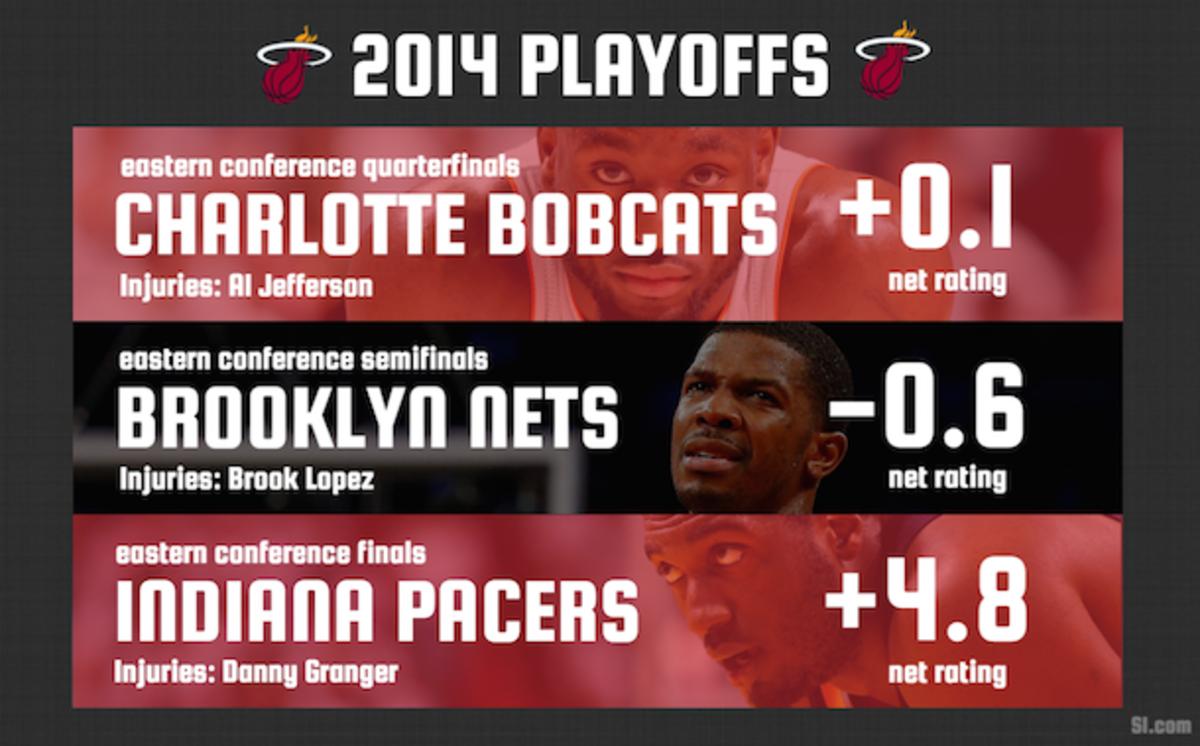
A ho-hum course to the Finals, all told. Charlotte, particularly with Al Jefferson hobbled by a foot injury, was only a temporary diversion. Brooklyn—with its length on the perimeter and defensive versatility—managed to play Miami closely in a way that never offered much real drama. The first two games of the series were settled by the Heat with ease, the last two with guile. One of these teams was of a contending caliber and the other was very much not.
NBA Finals roundtable: Which Warrior wing is best-suited to guard LeBron?
Even a reunion with the Pacers, who just a year prior demanded the Heat’s full effort and attention, couldn’t quite live up to its repeat billing. Indiana had faded for months after its astounding start to the regular season and failed to drum up consistent offense. Hibbert wasn’t the same offensively, the bench was of little use, and the Heat had progressed within their system. In all, James and his teammates avoided any real peril by taking hold of the series at every critical juncture.
2015 (Cleveland Cavaliers)
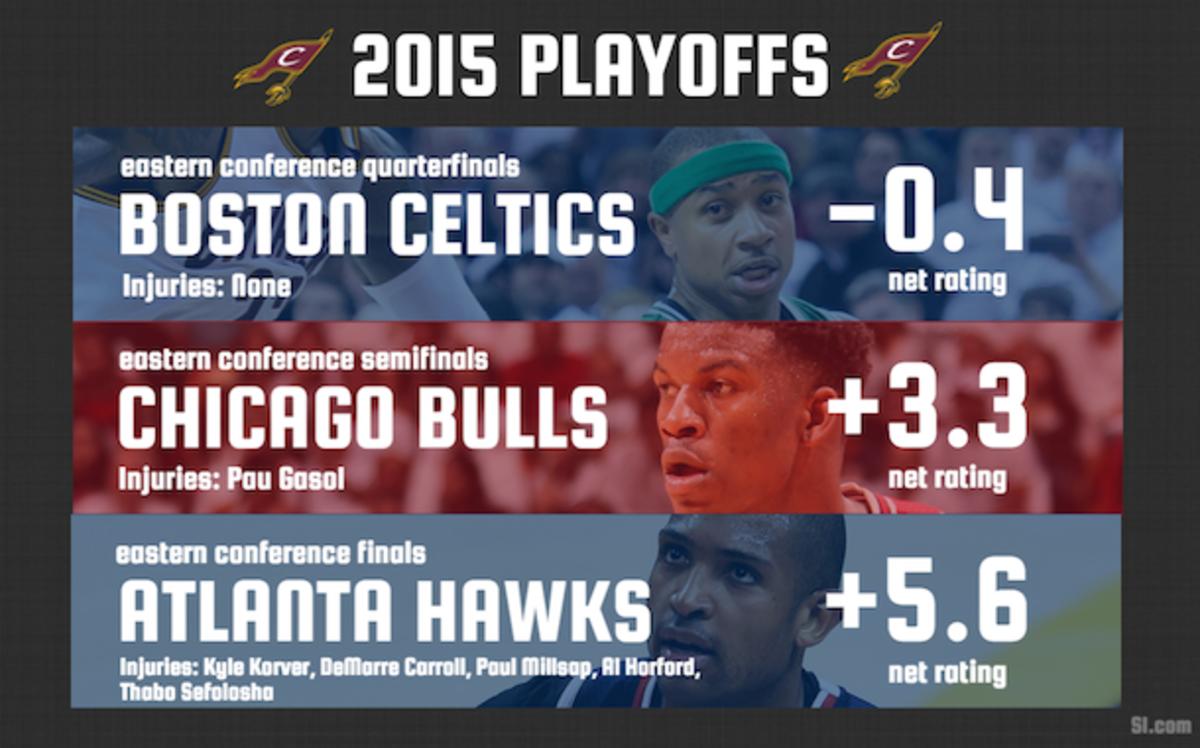
There is a hypothetical version of LeBron’s 2015 playoff path as formidable as any he faced in the last five years. The first round, regardless of matchup, would prove irrelevant; none of the East’s empty qualifiers would put up much of a fight against a juggernaut like the Cavs. Chicago, though, had significantly upgraded its offensive talent and drew from a rich history of team defense. Had the Bulls found more effective means to synergize those strengths, they may have had a reasonable claim as the best team in the conference. Atlanta, at the height of its powers this season, was capable of bouncing even the best player in the league out of the postseason.
Instead, the Bulls never mapped a way out of inconsistency and the Hawks withered with dull execution and pervasive injury. There were points in the Chicago series when it looked as if James might find himself against the ropes. Clutch shooting and a stellar Game 5 performance (38 points, 12 rebounds, six assists) quickly dismissed the thought.
James' Best Playoff Performances
LeBron James’s SI Covers
February 18, 2002
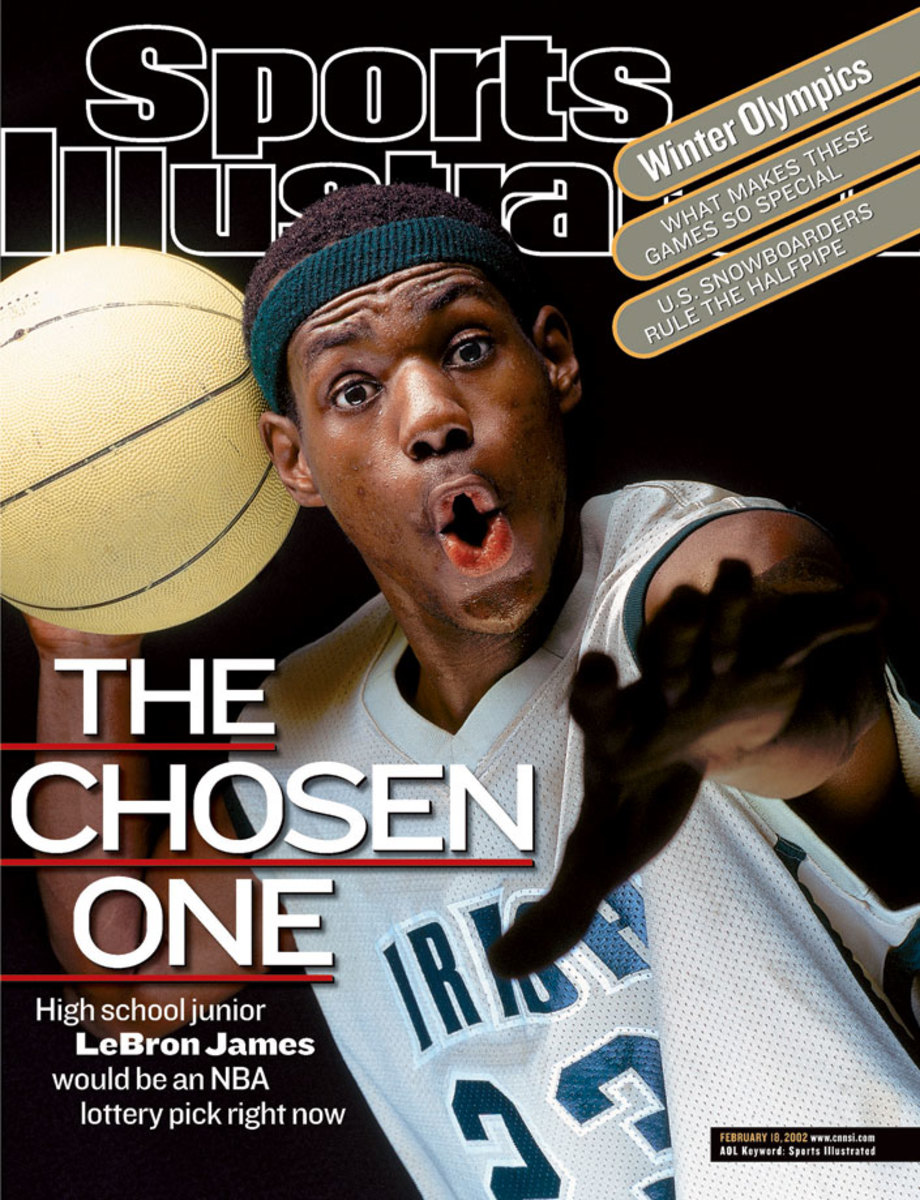
October 27, 2003
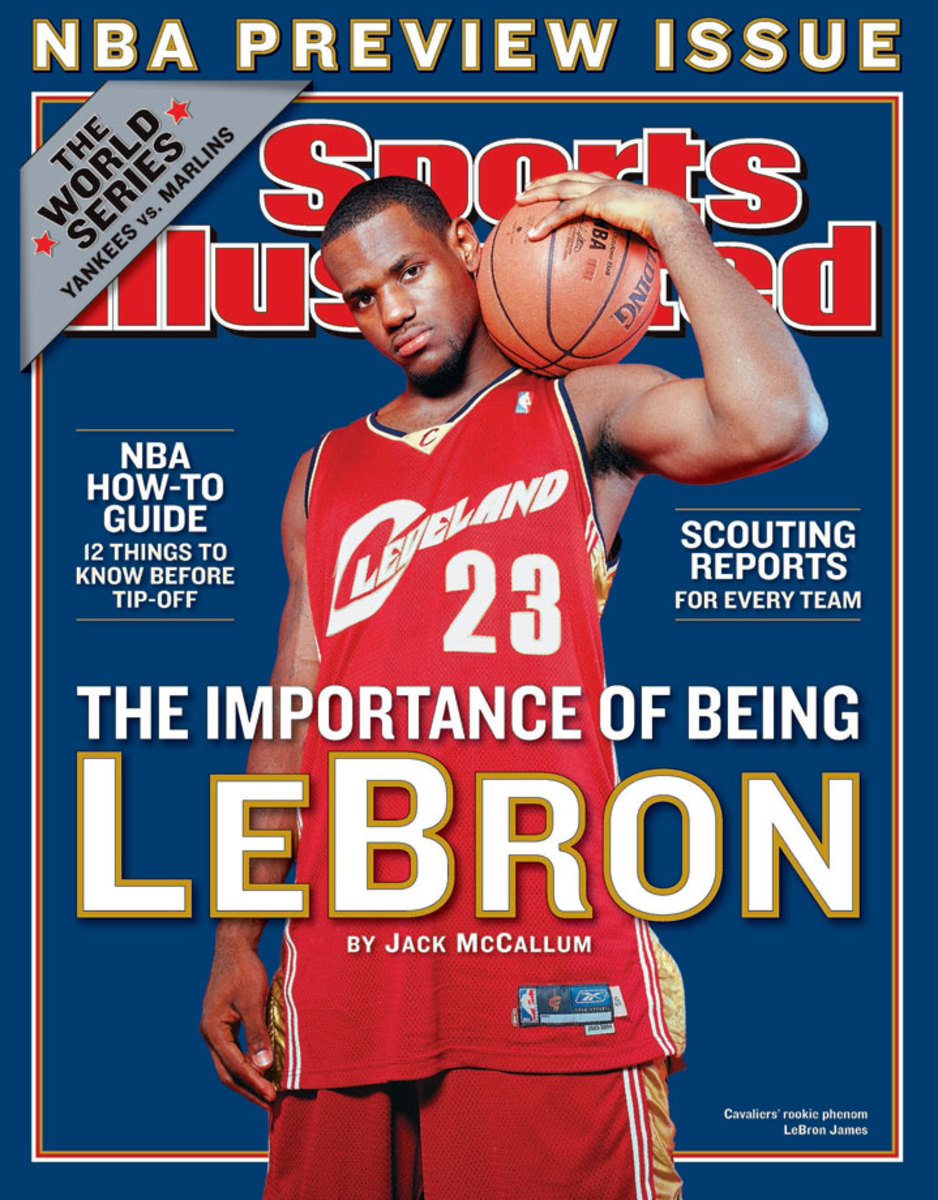
February 21, 2005
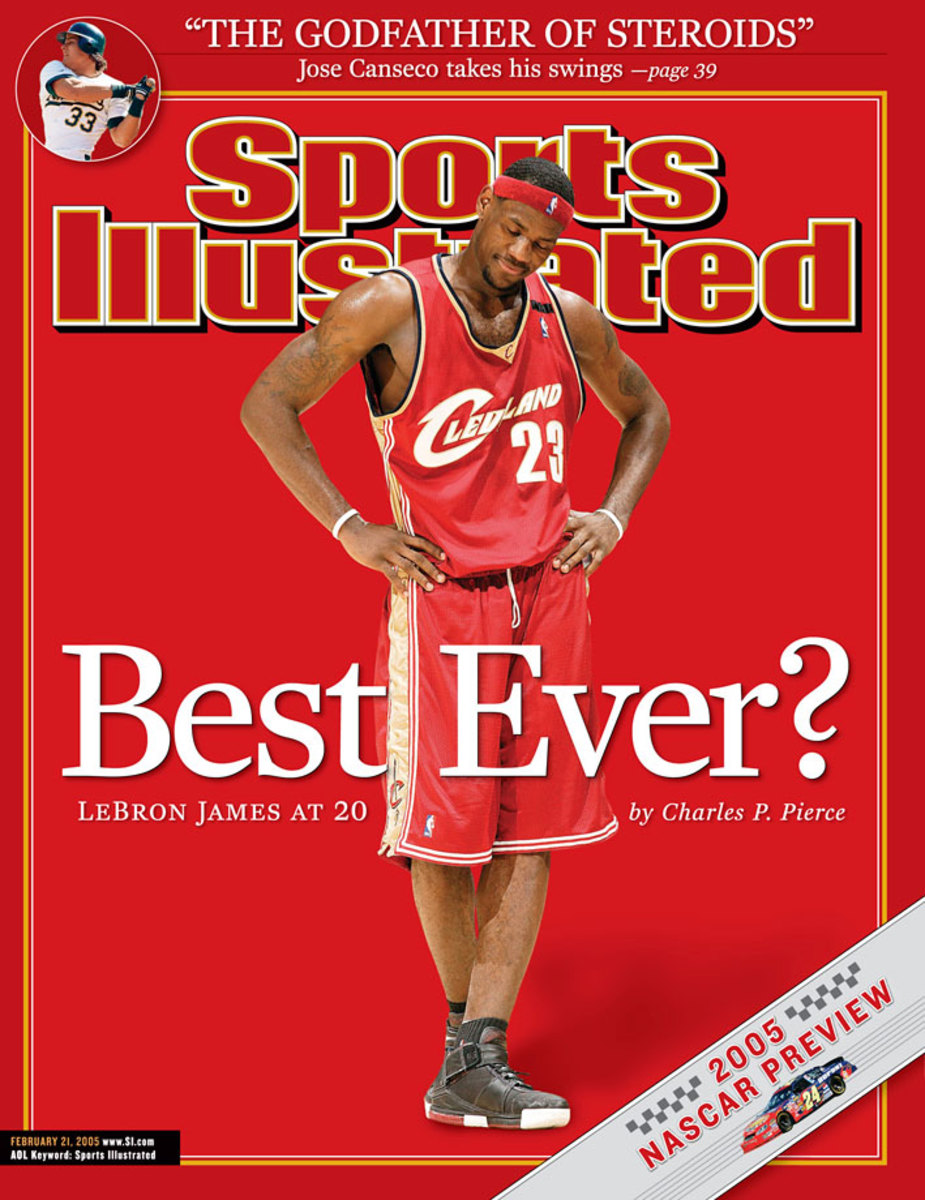
April 24, 2006
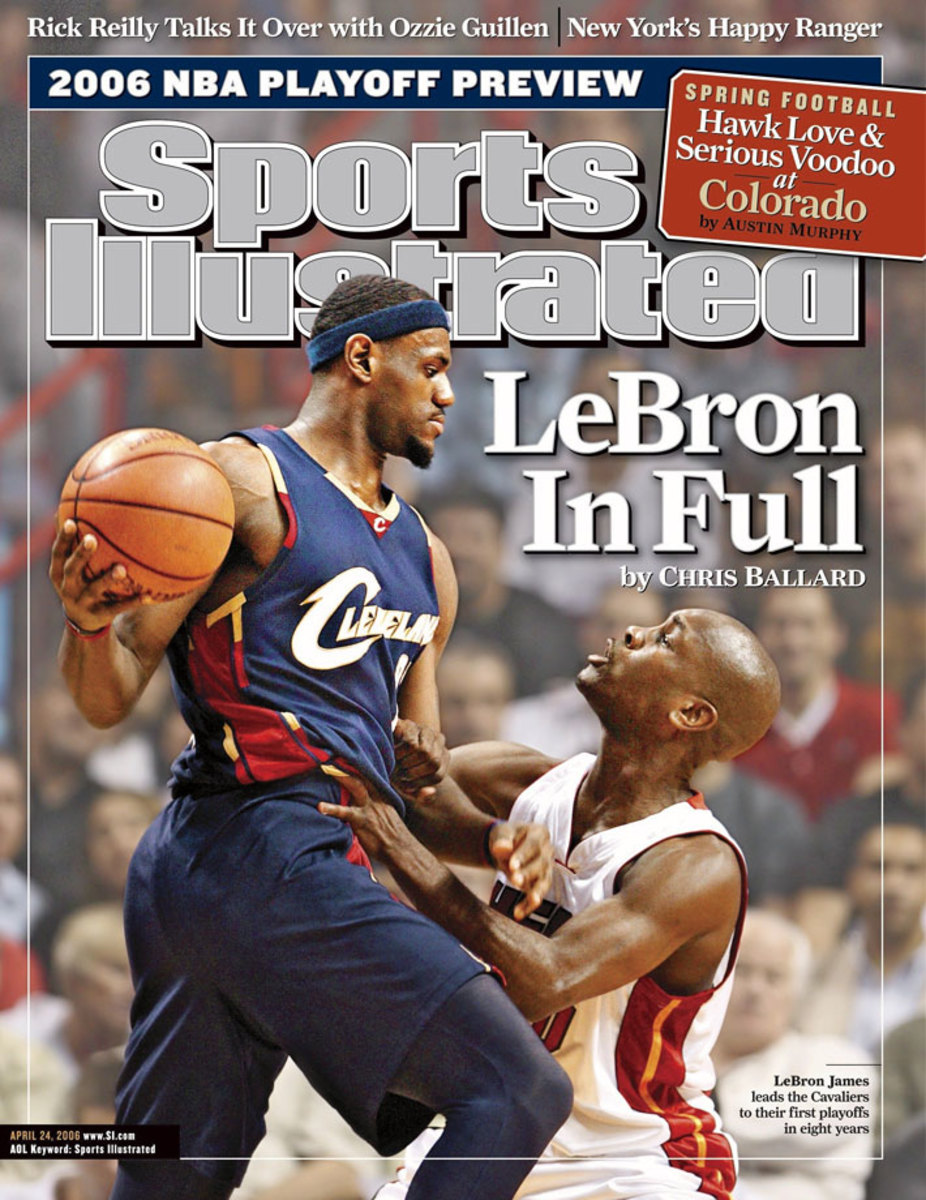
October 23, 2006
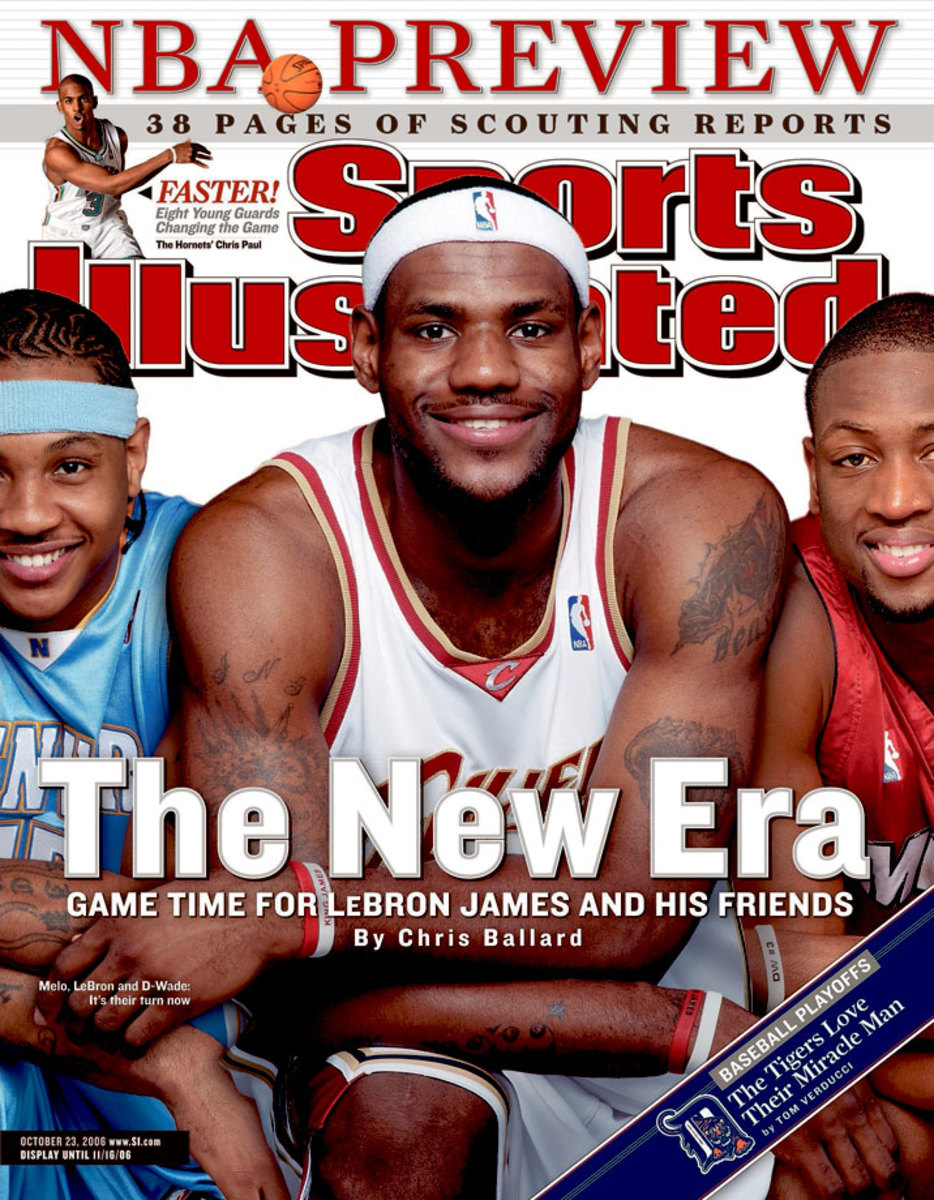
June 11, 2007
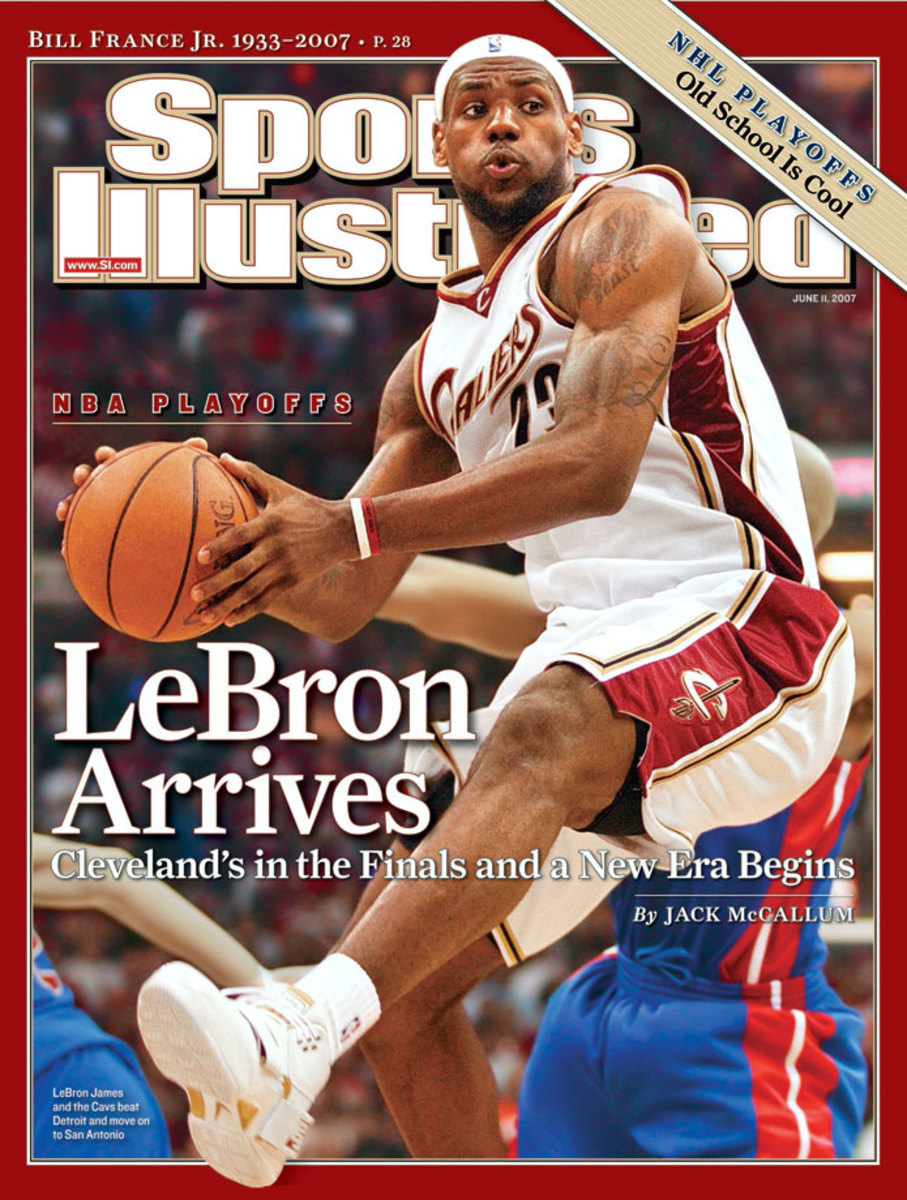
October 27, 2008
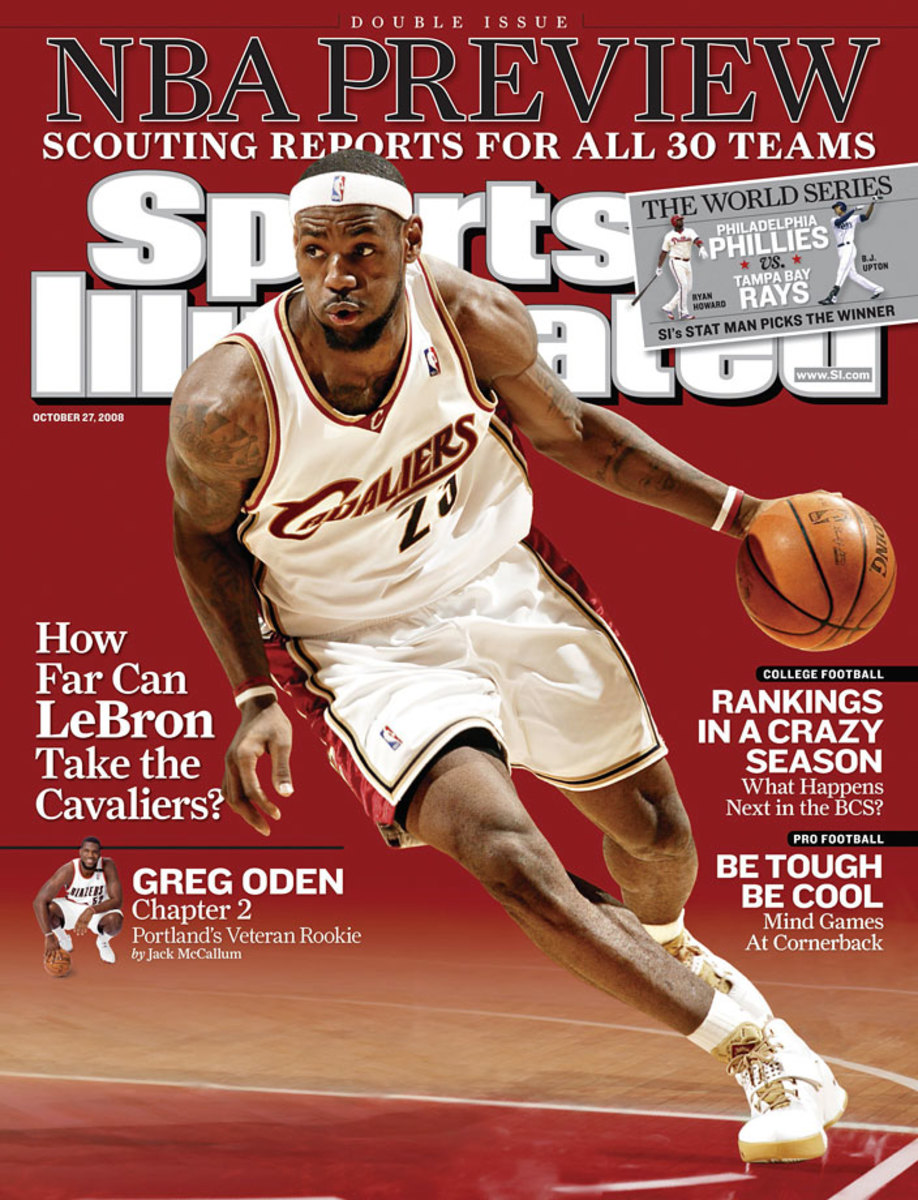
February 2, 2009
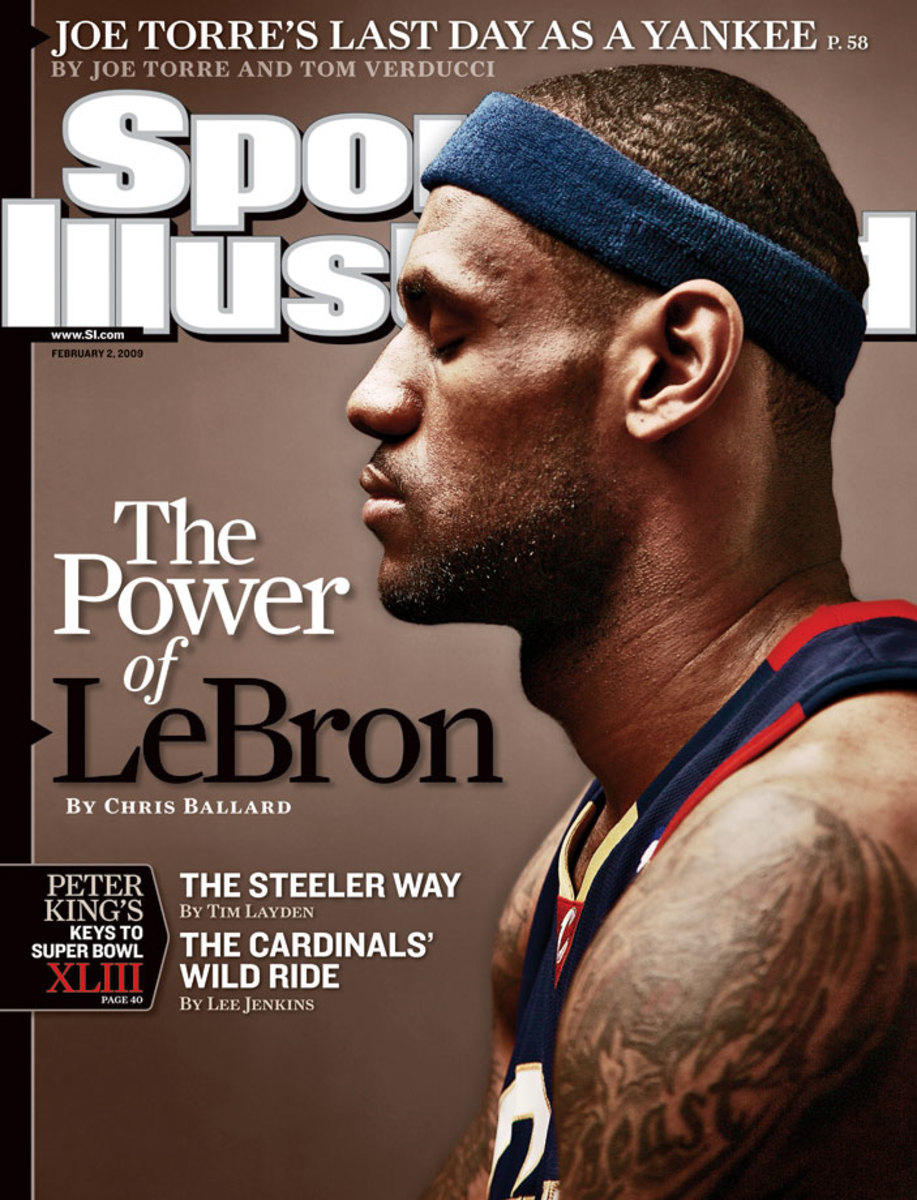
May 25, 2009
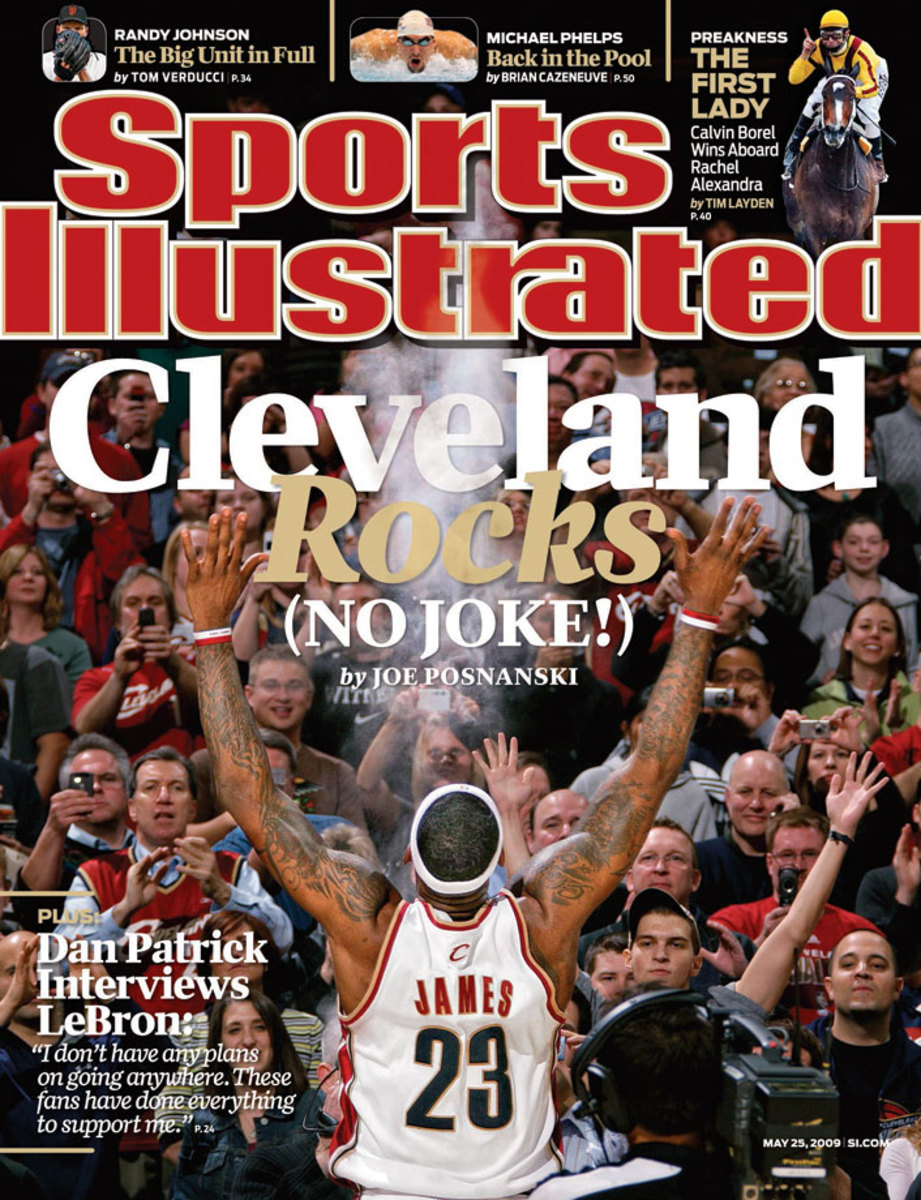
October 26, 2009
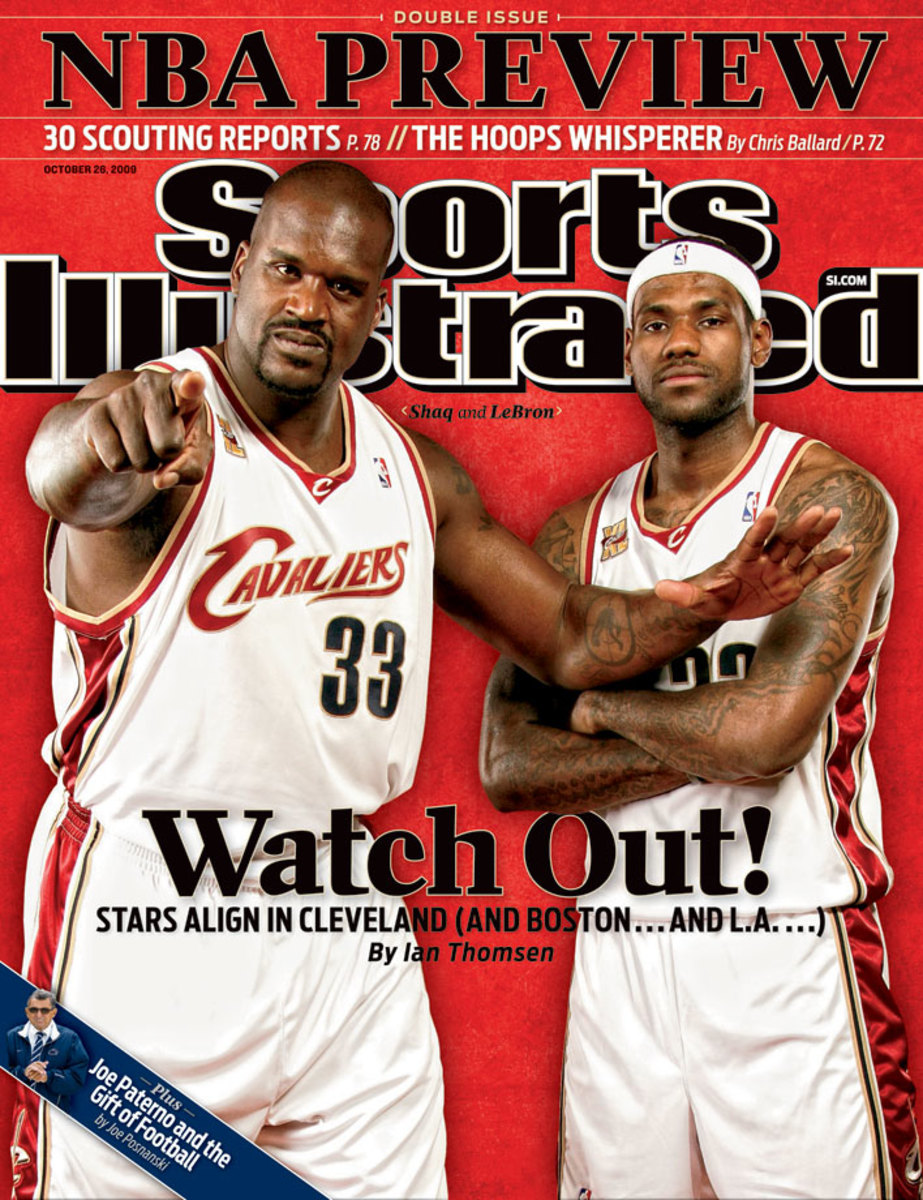
December 28, 2009
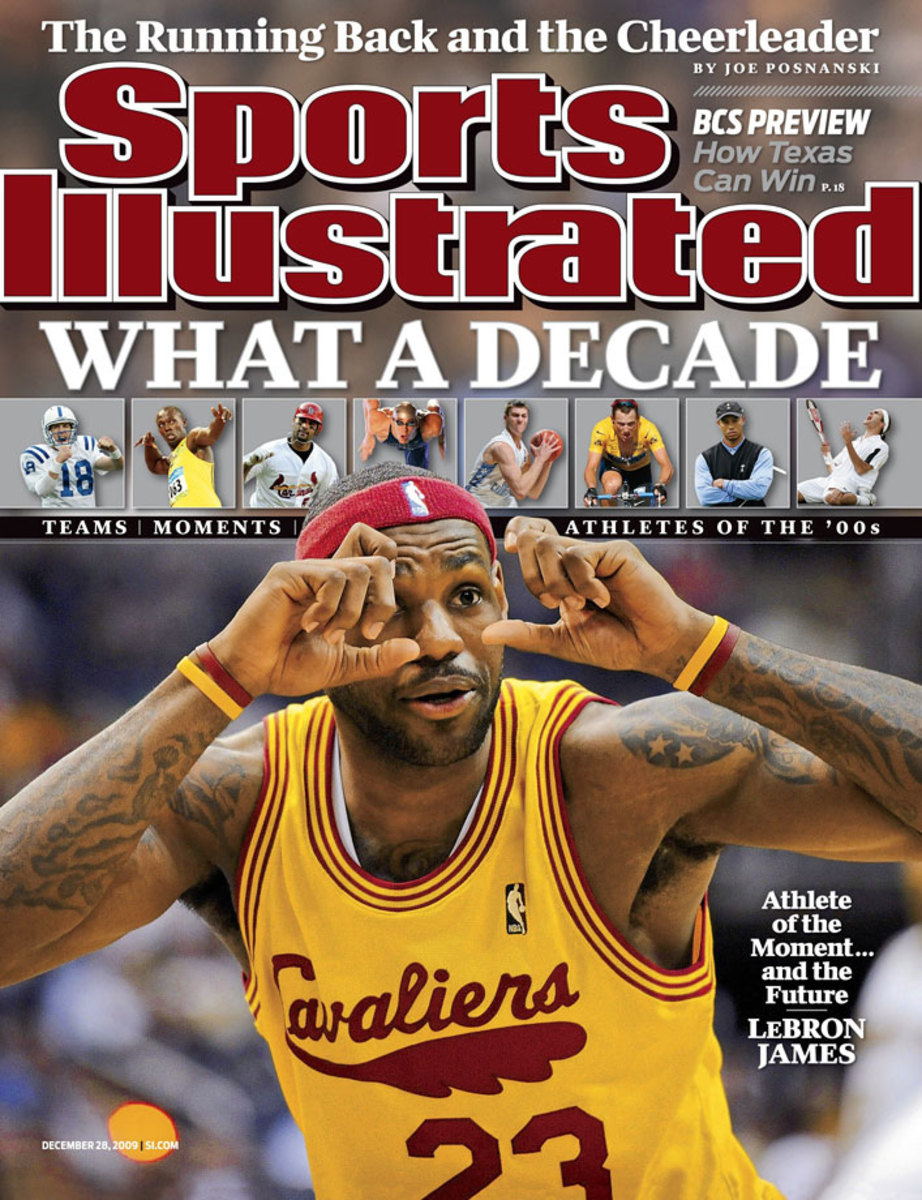
July 19, 2010
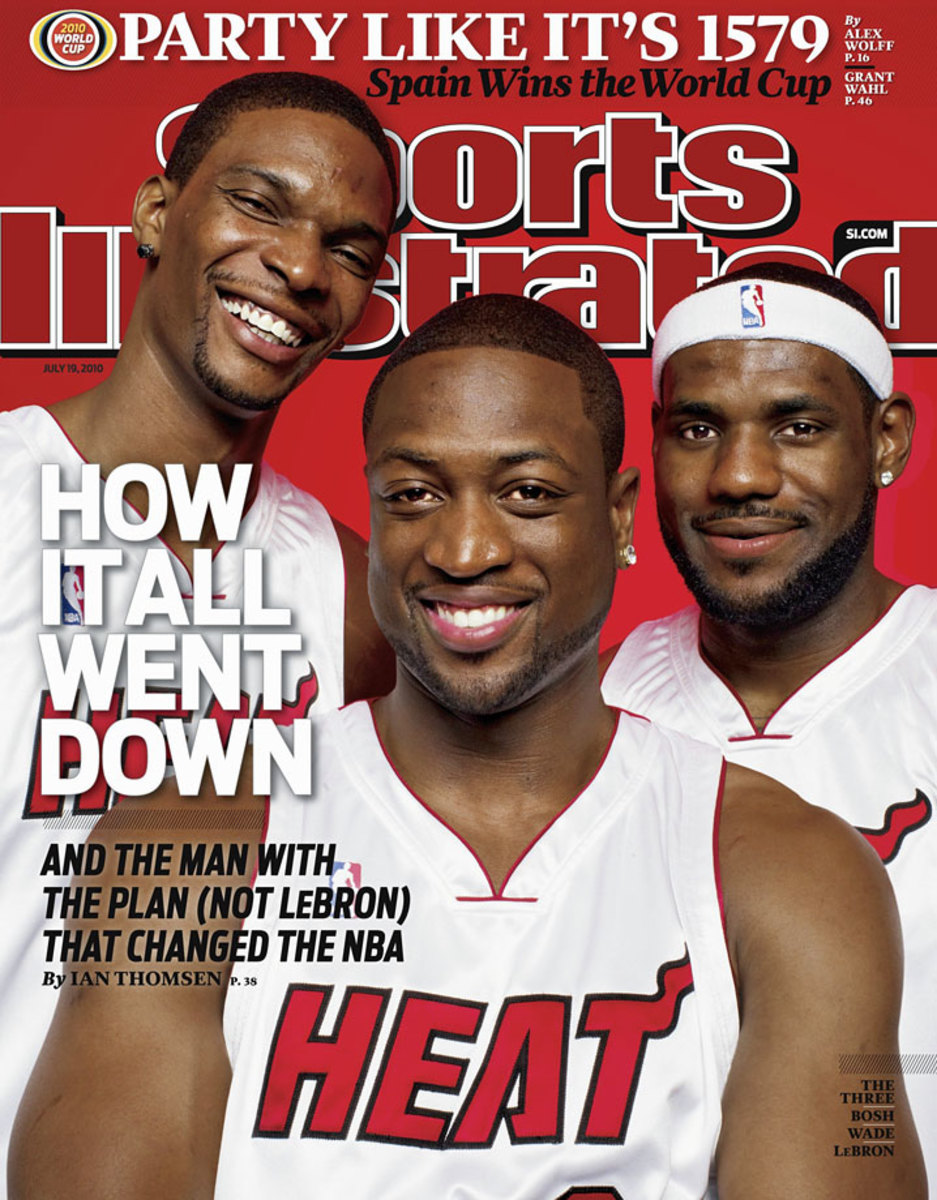
May 30, 2011
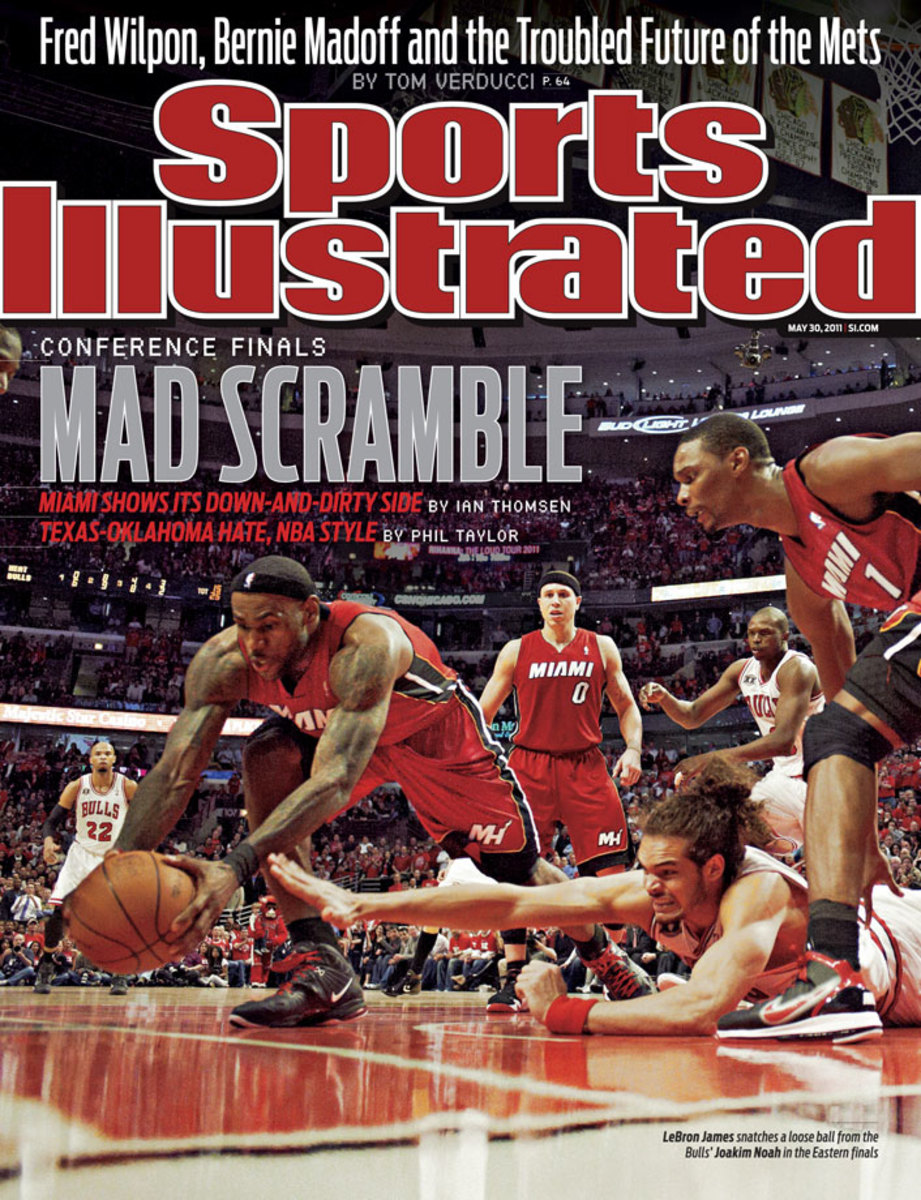
April 30, 2012
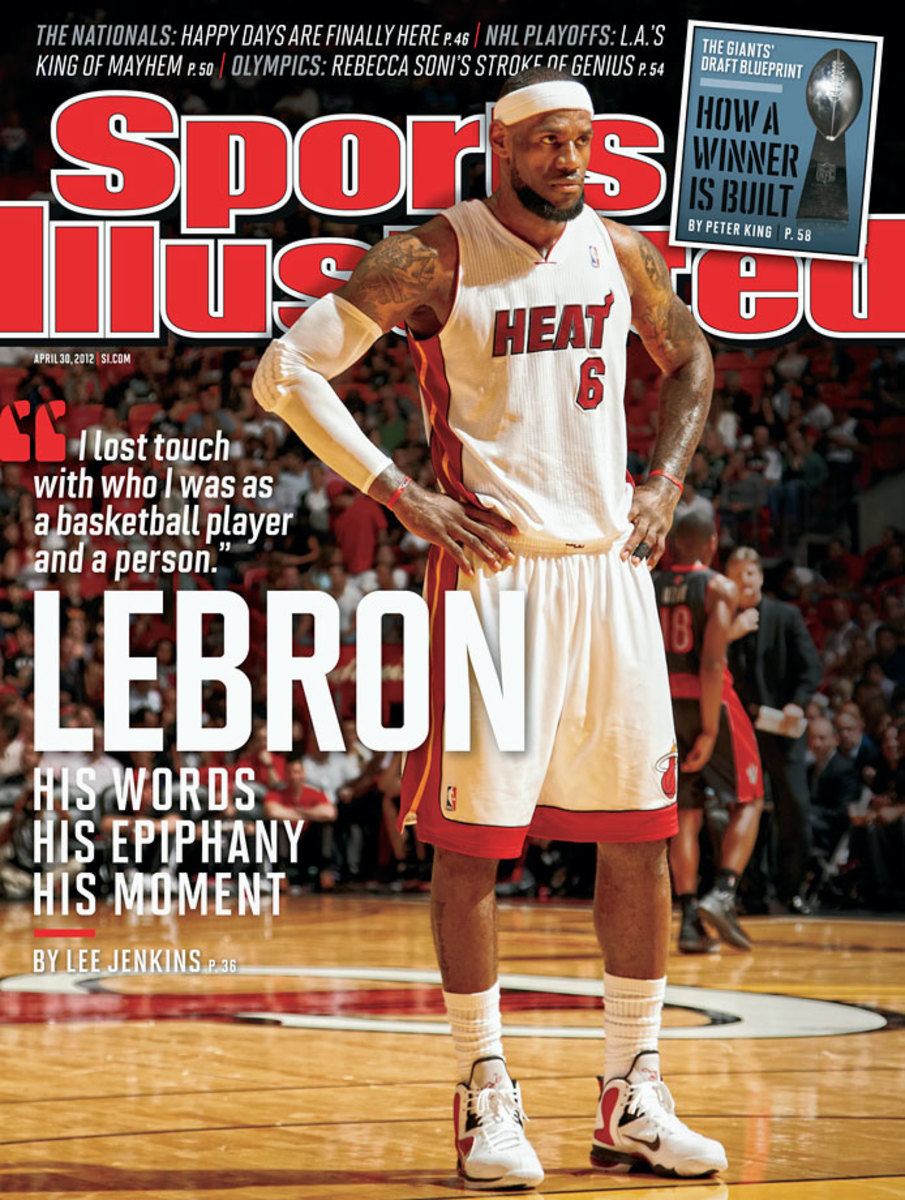
June 18, 2012
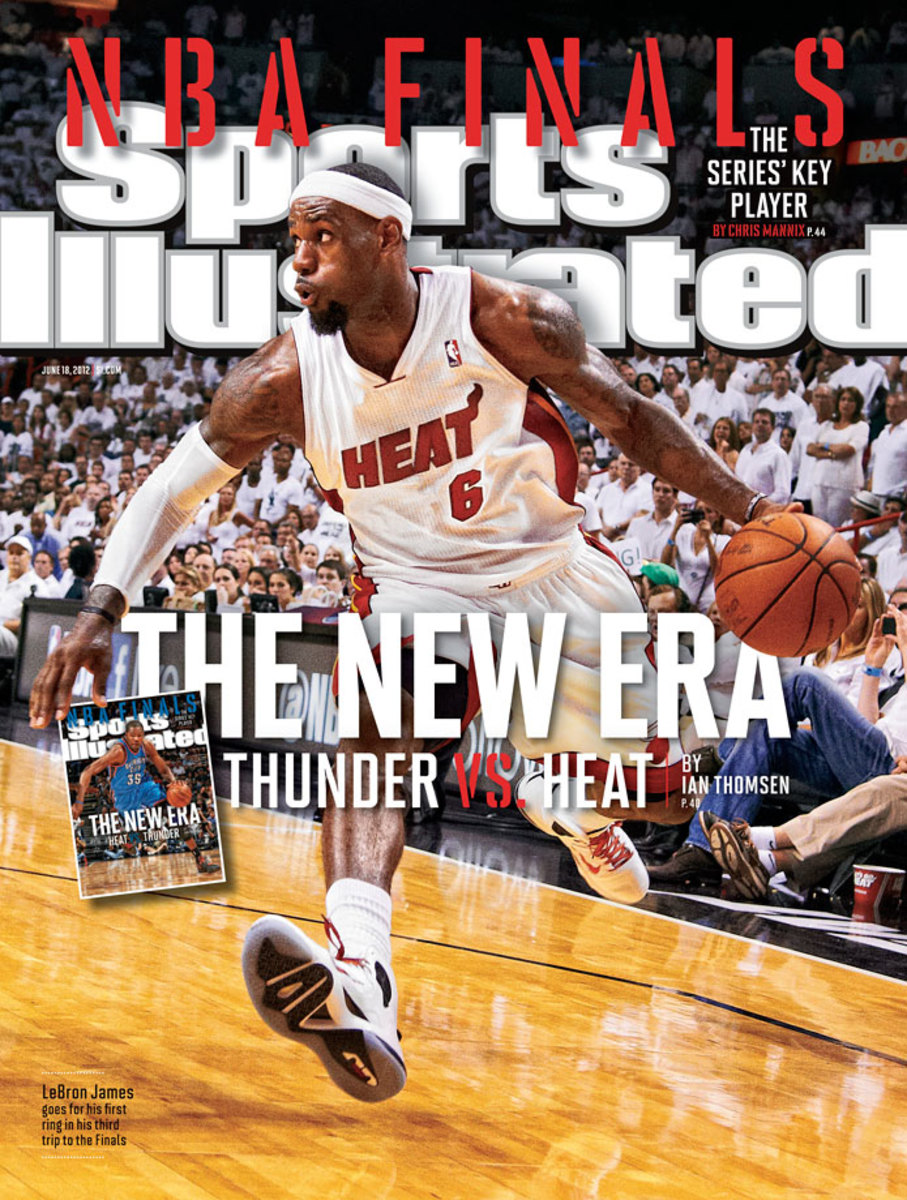
June 25, 2012
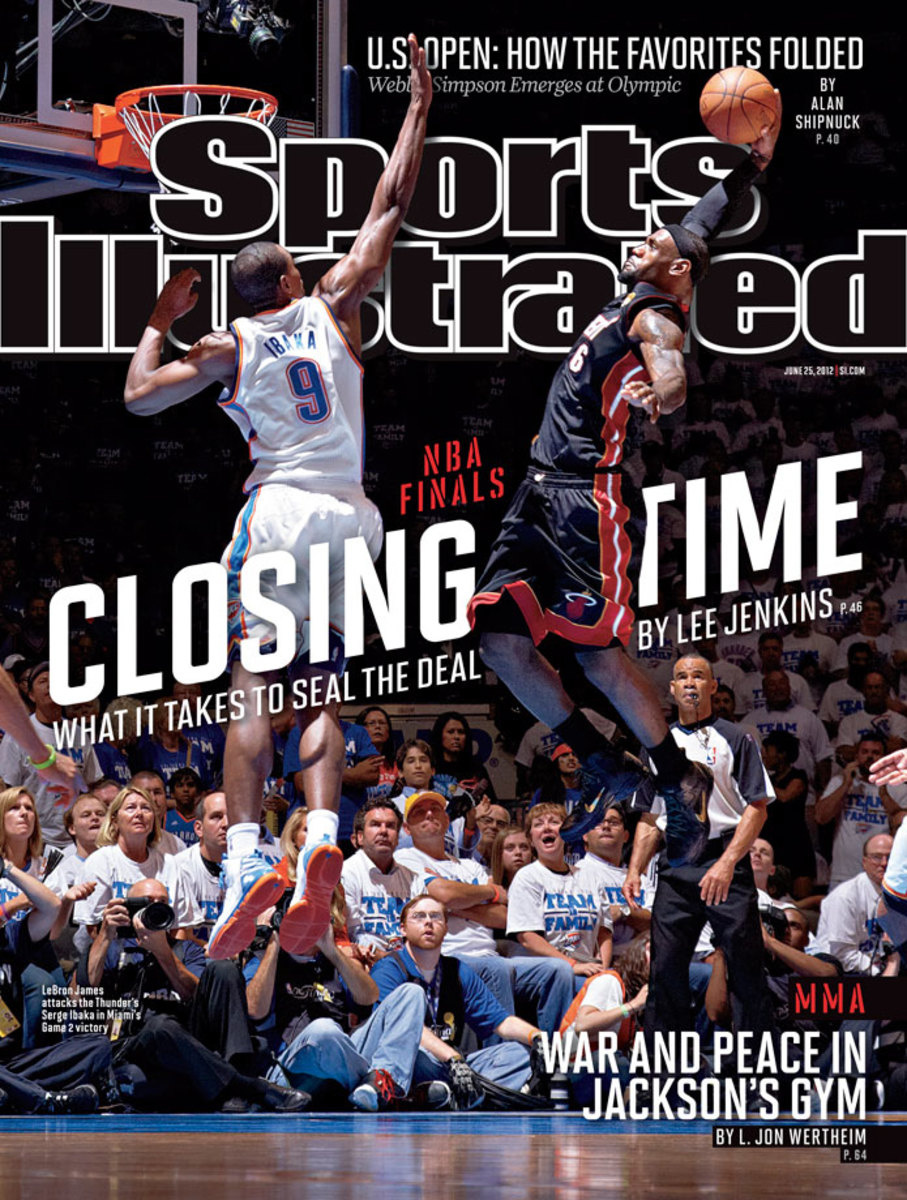
July 2, 2012
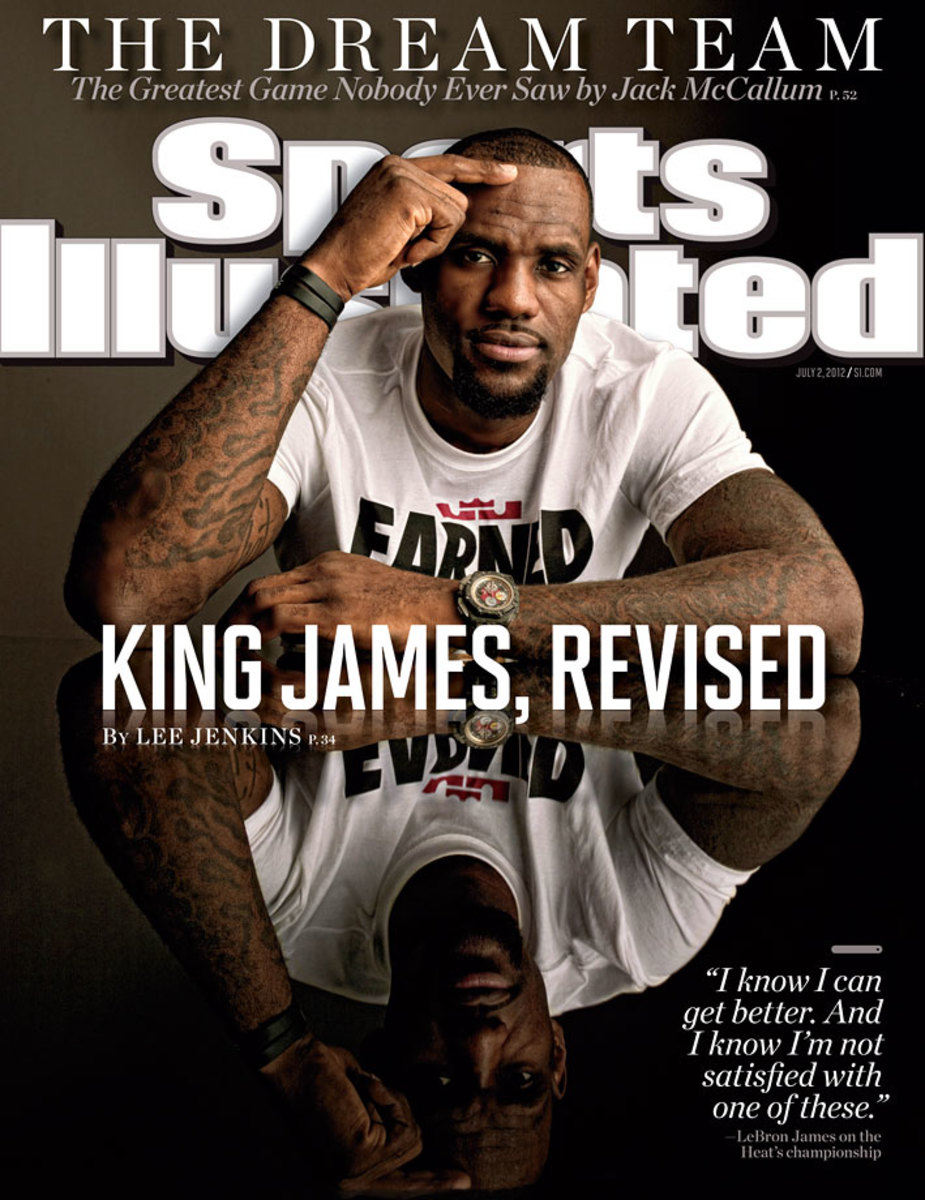
December 10, 2012
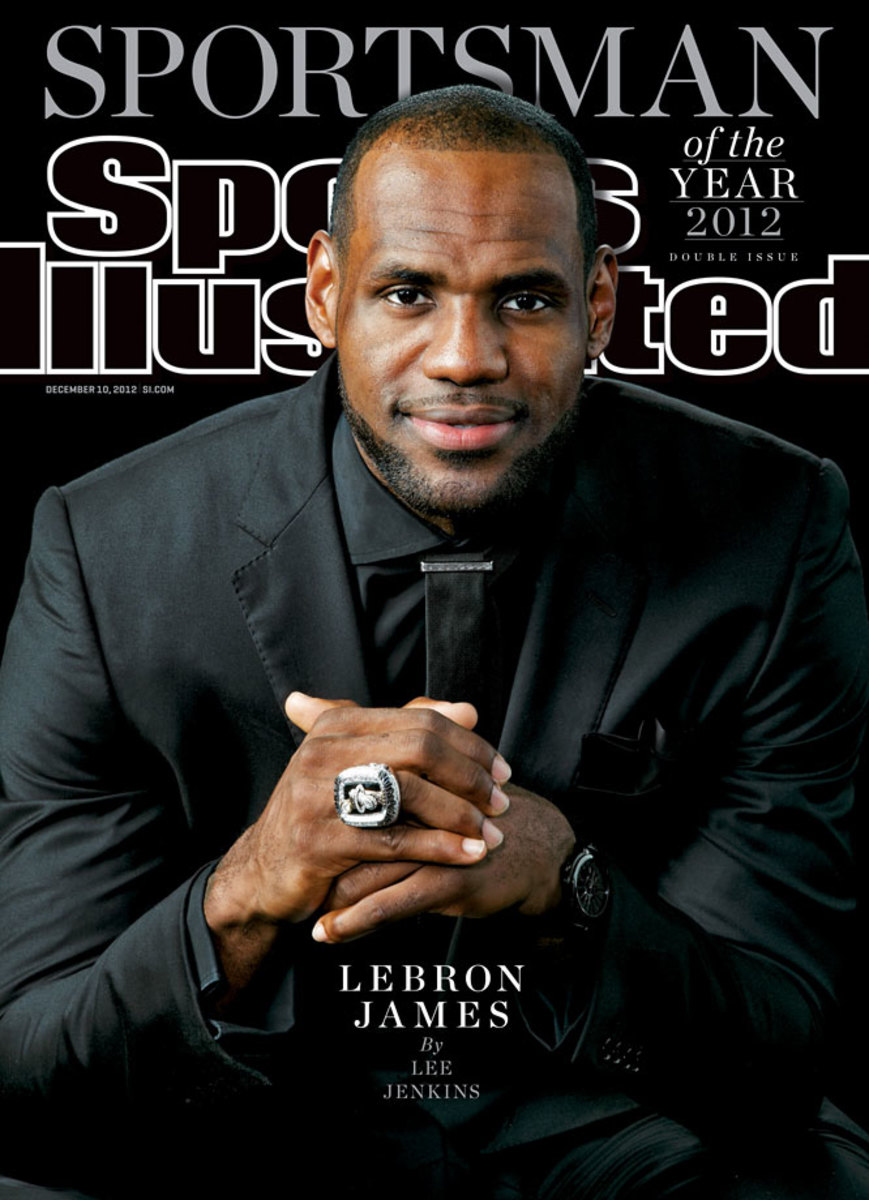
June 3, 2013
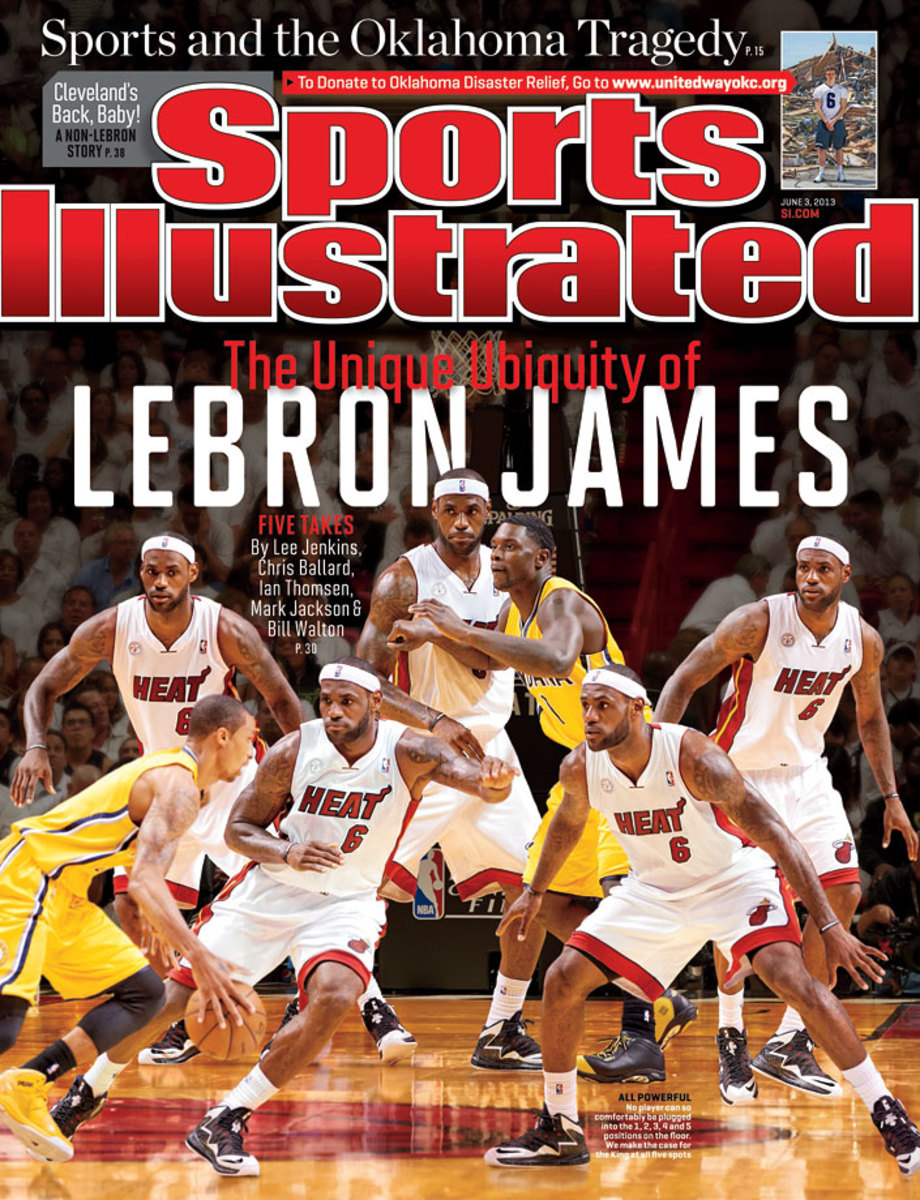
July 1, 2013
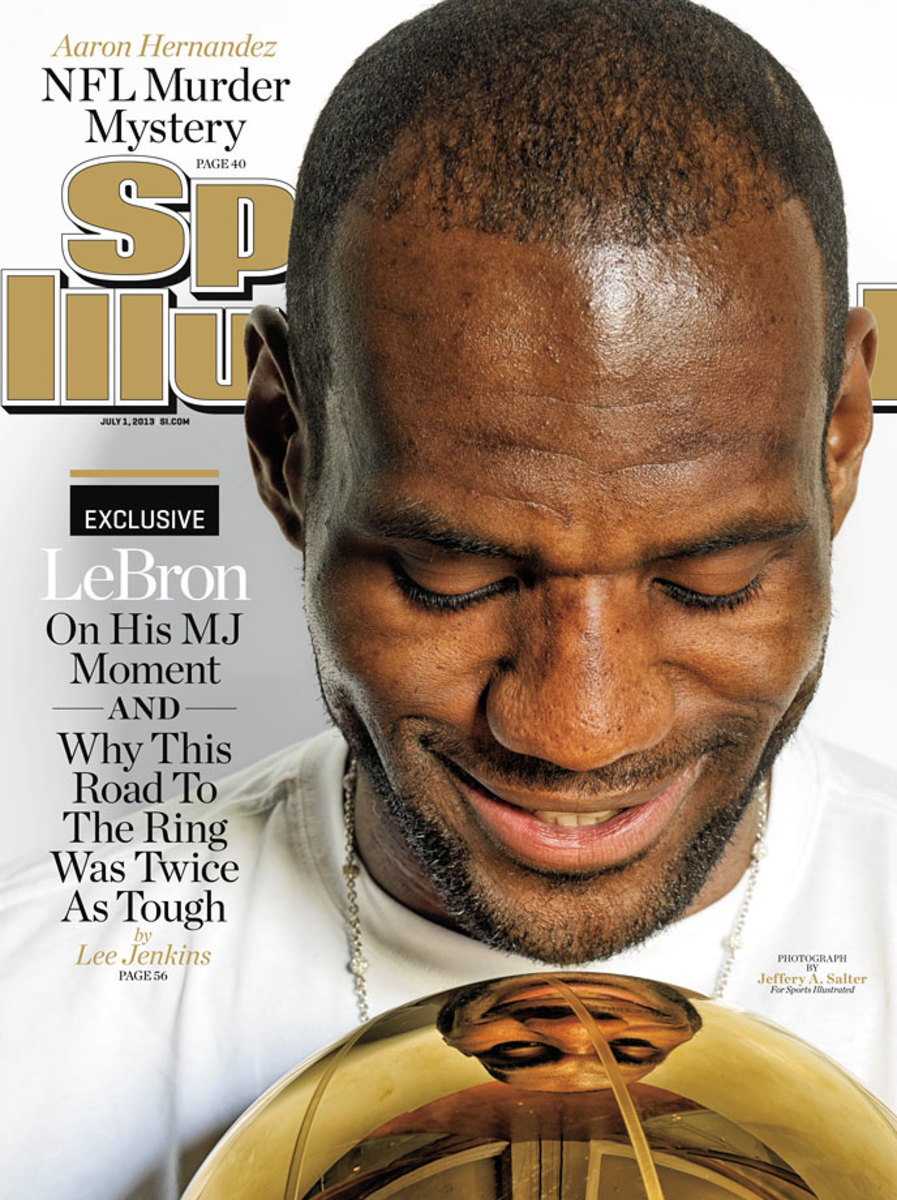
July 21, 2014
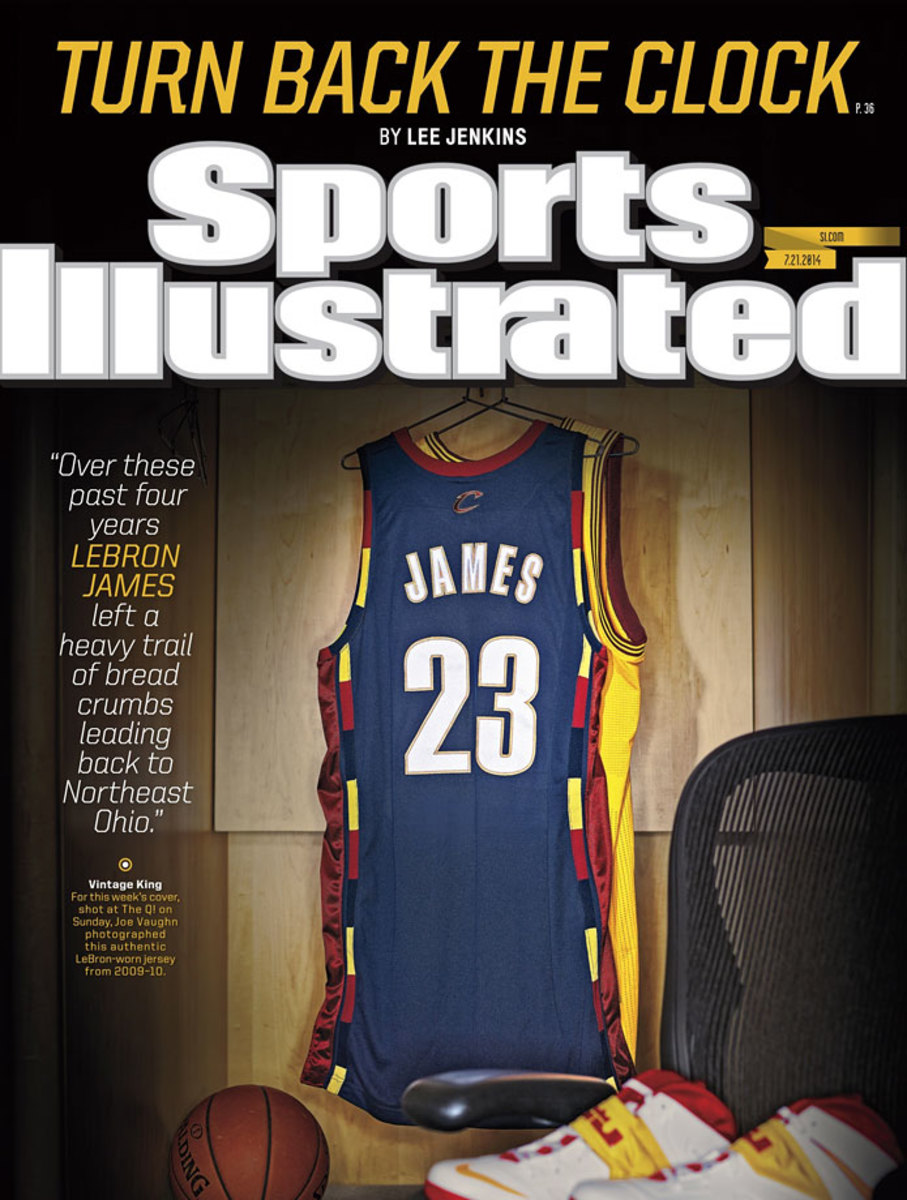
October 27, 2014
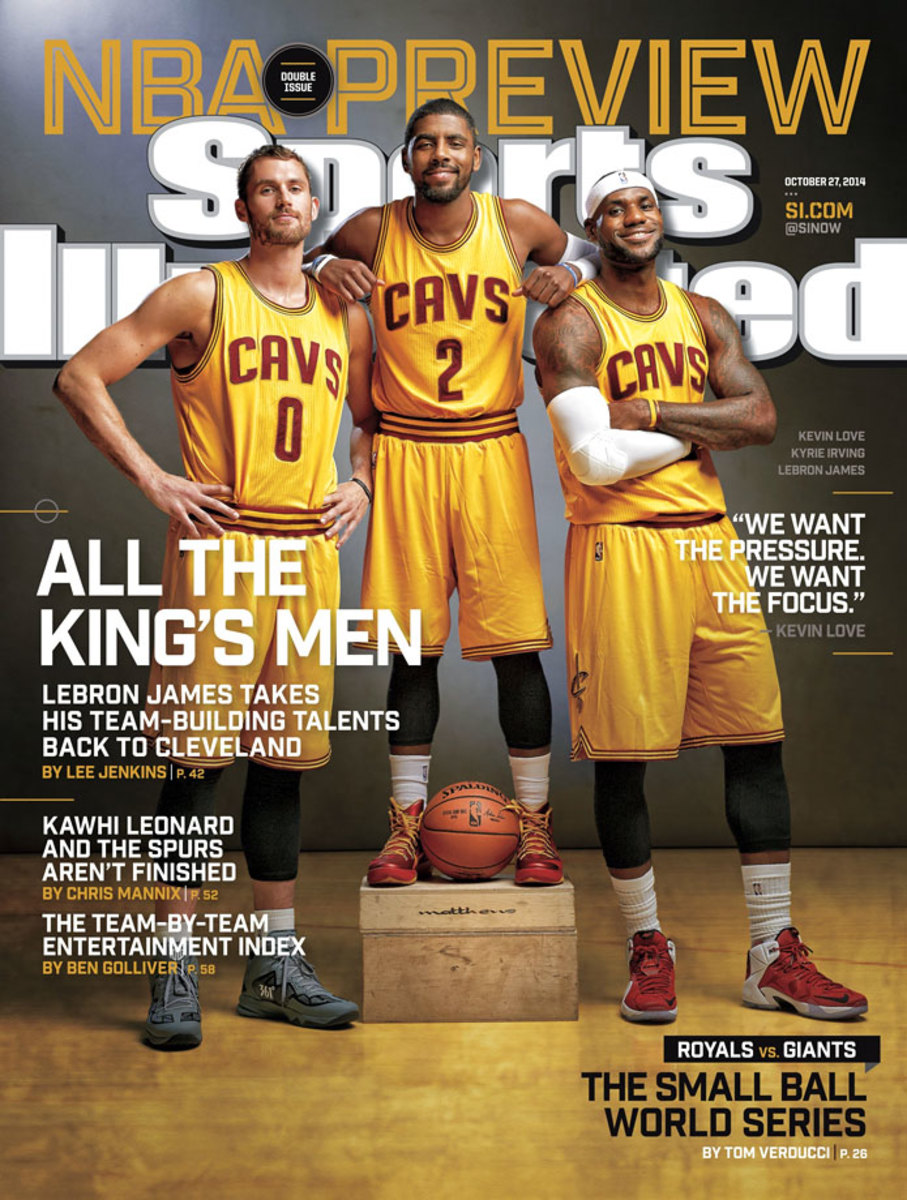
June 1, 2015
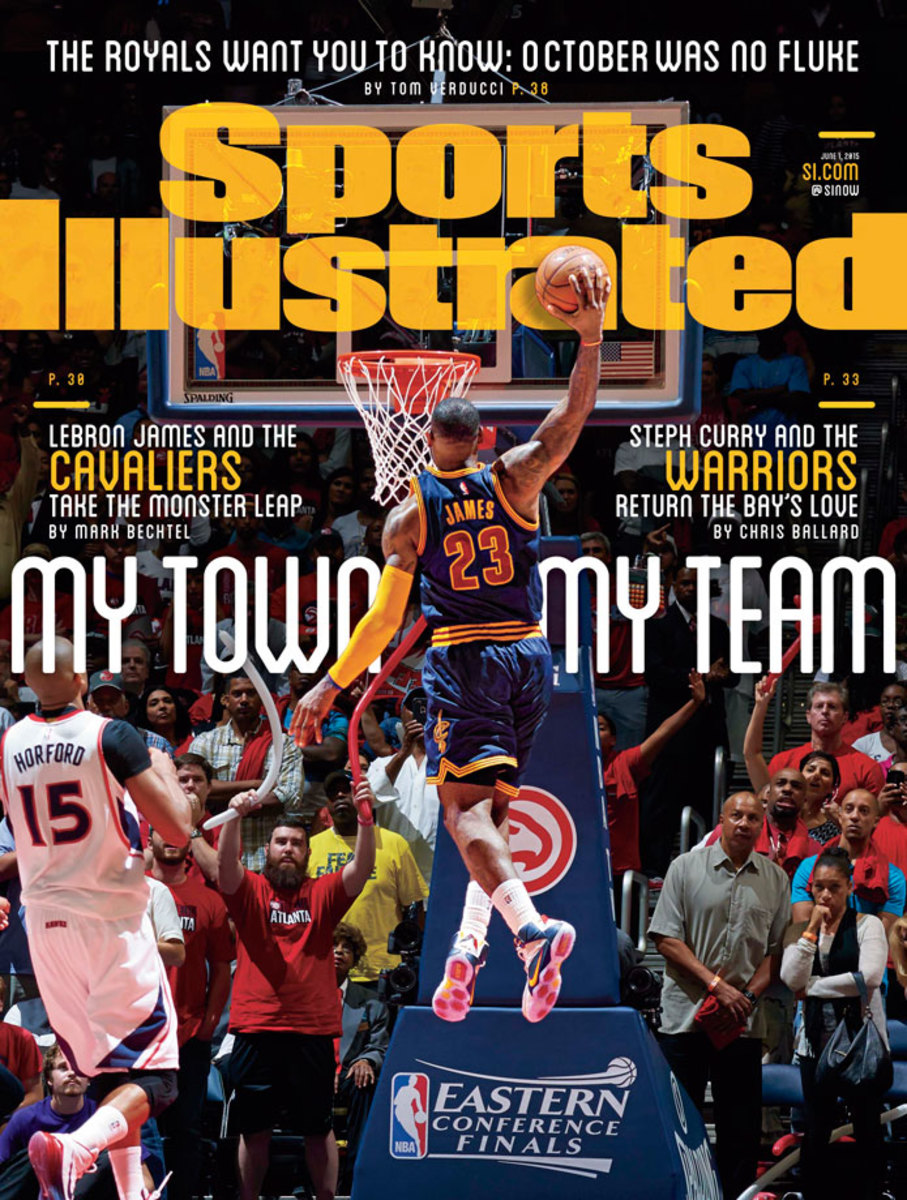
June 22, 2015
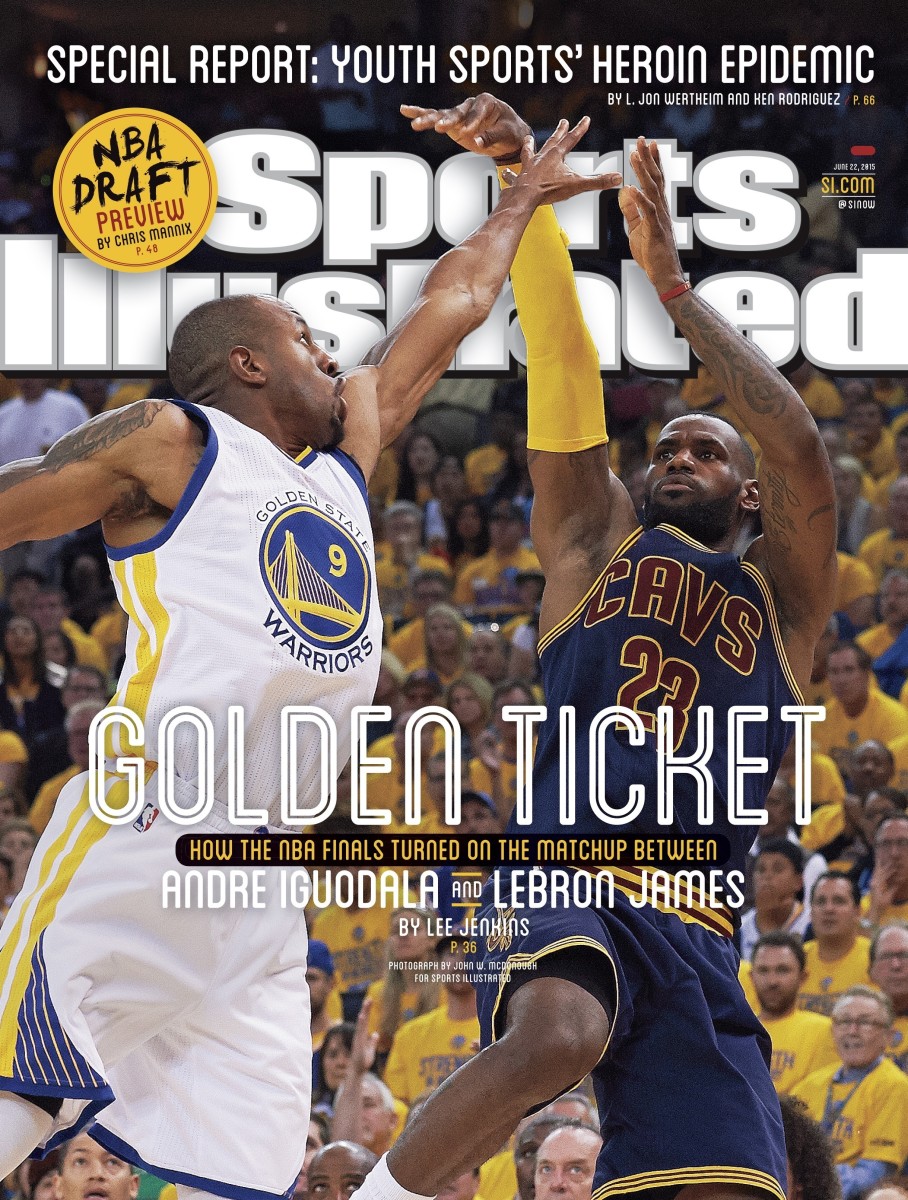
December 7, 2015
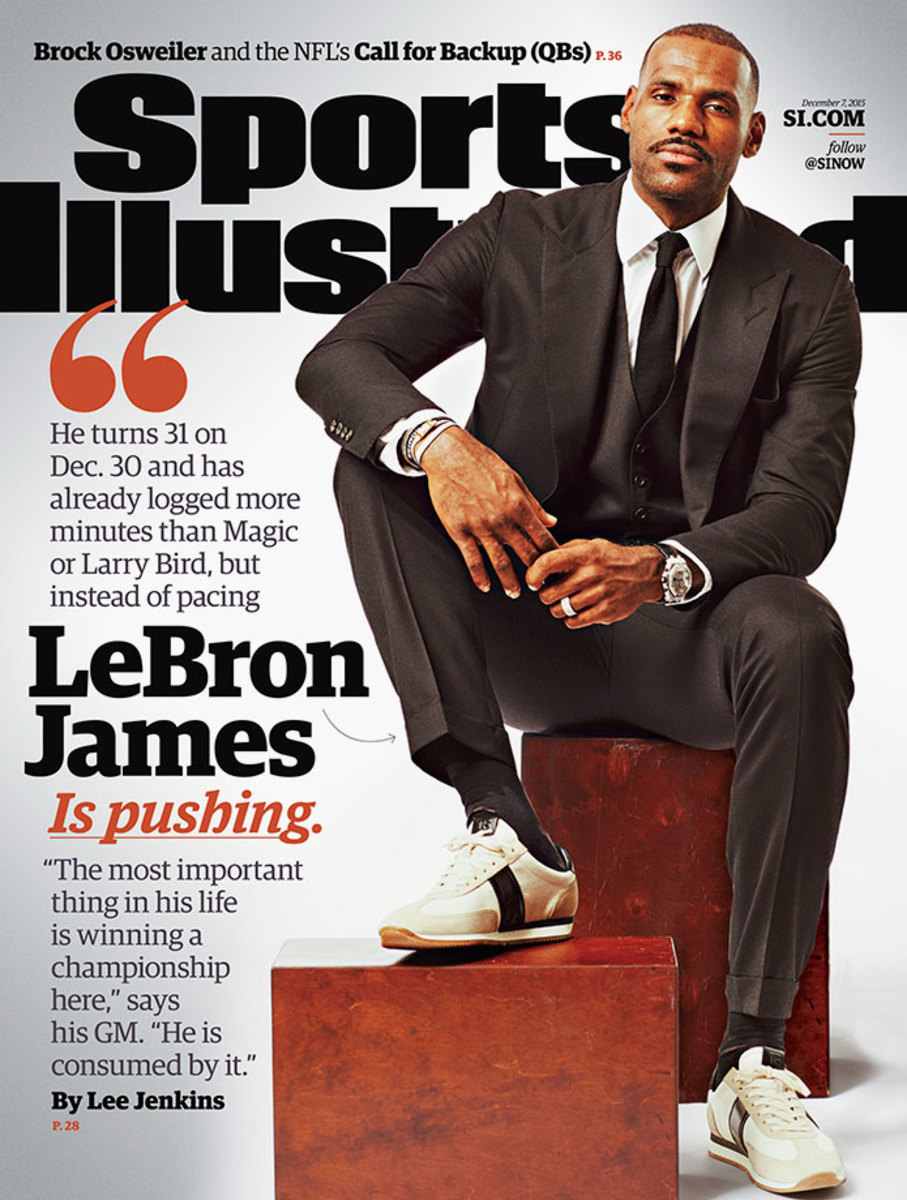
June 27, 2016
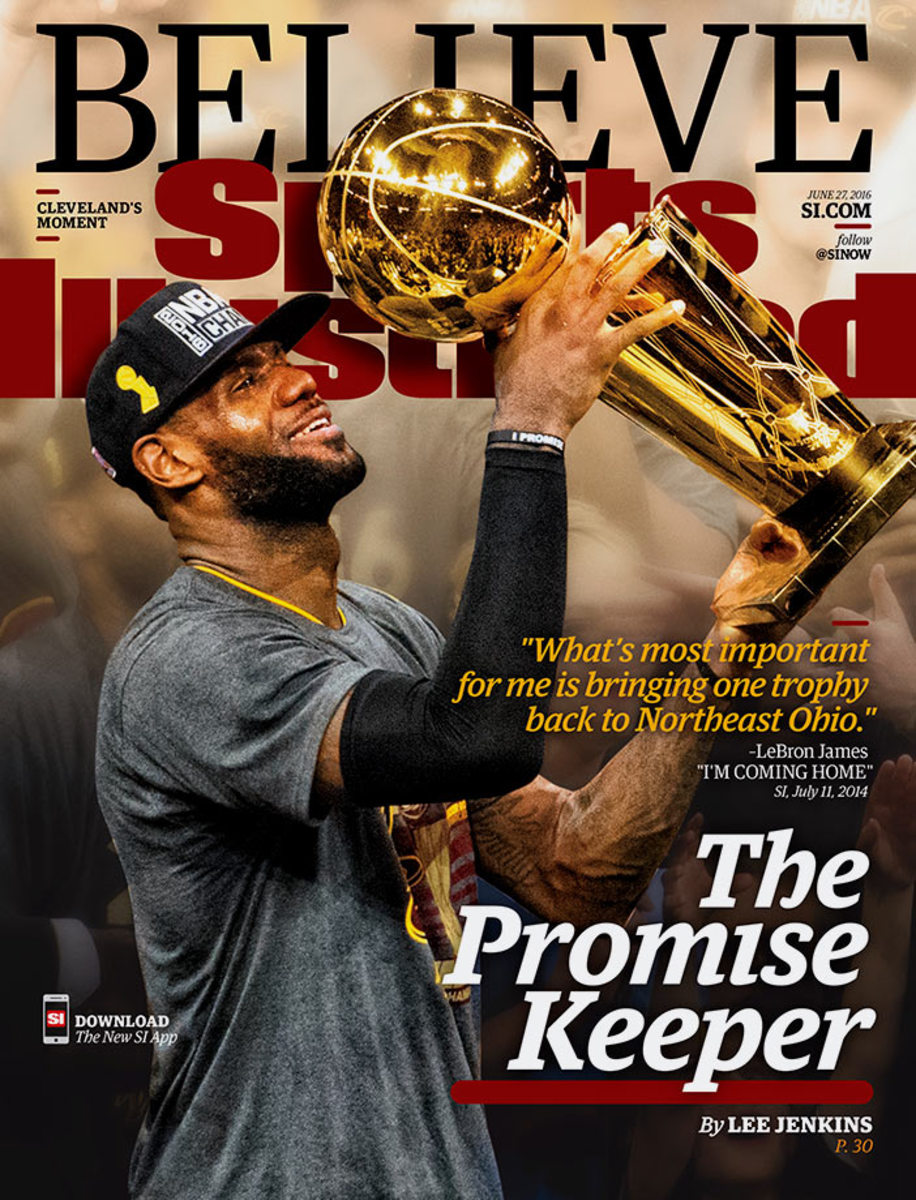
August 8, 2016
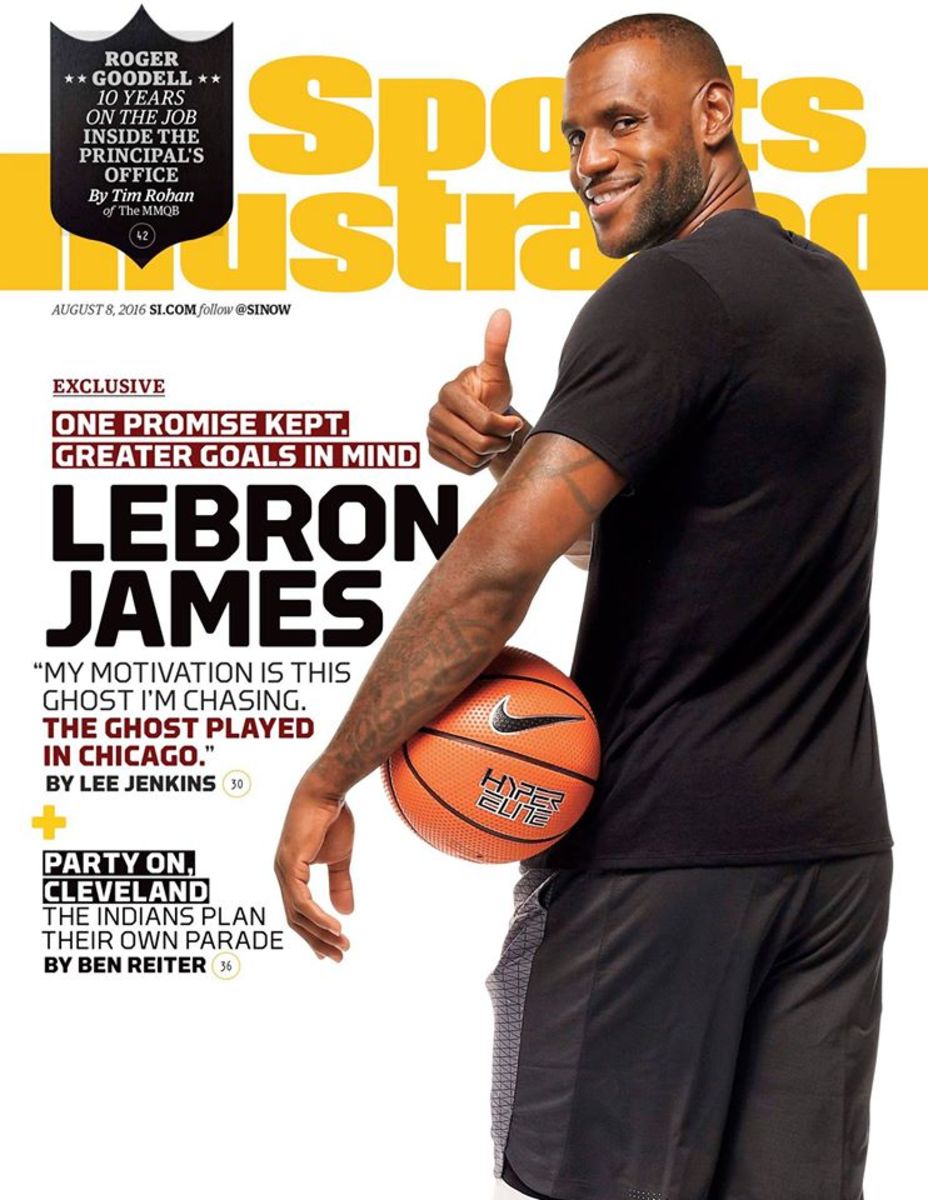
December 19, 2016
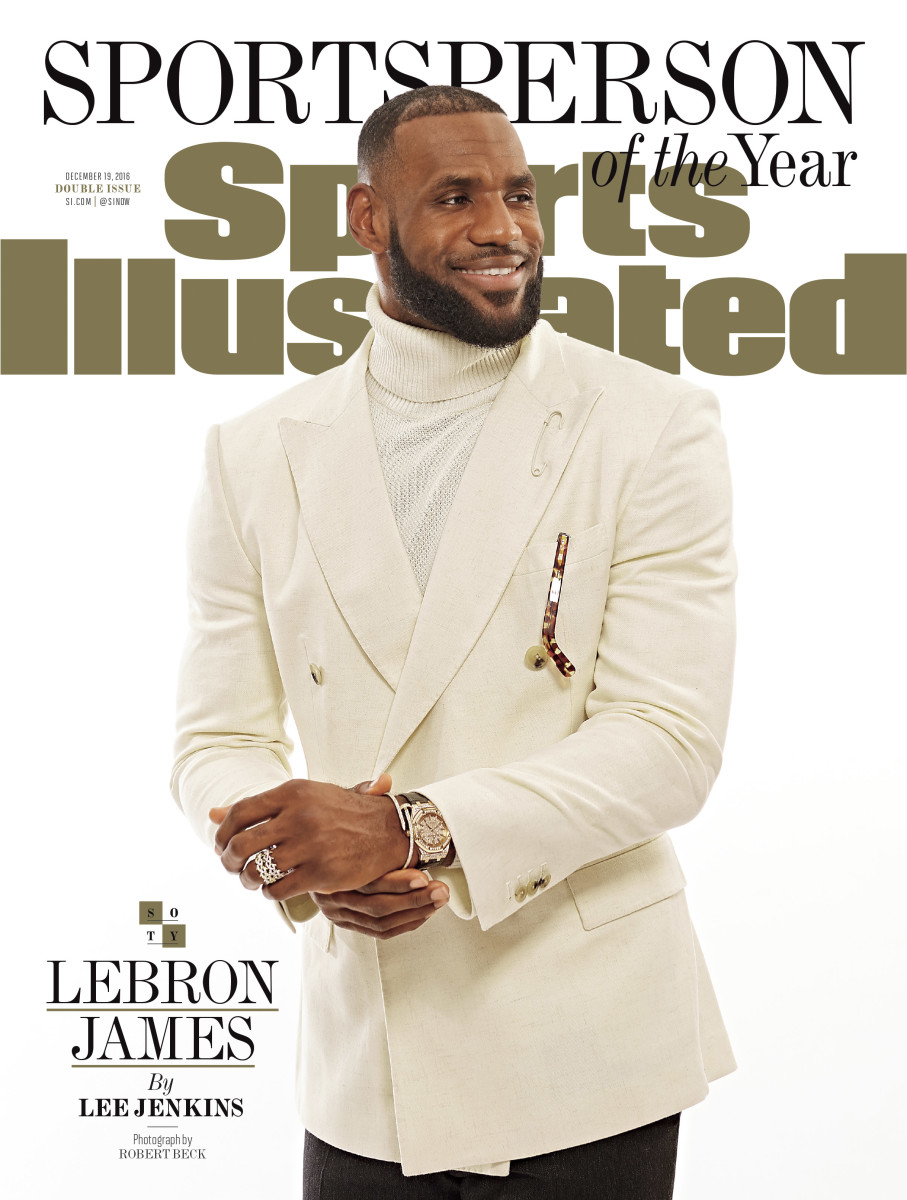
June 5, 2017
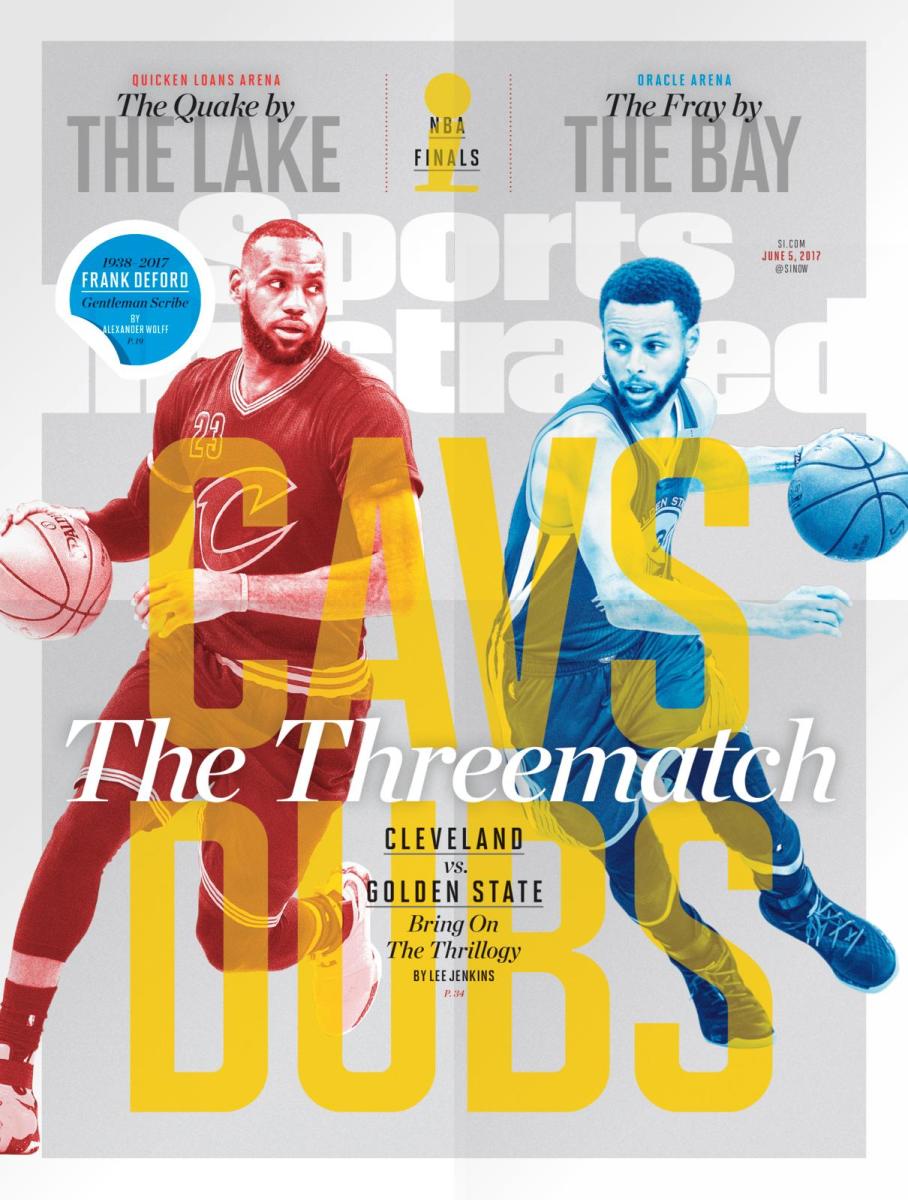
October 2, 2017
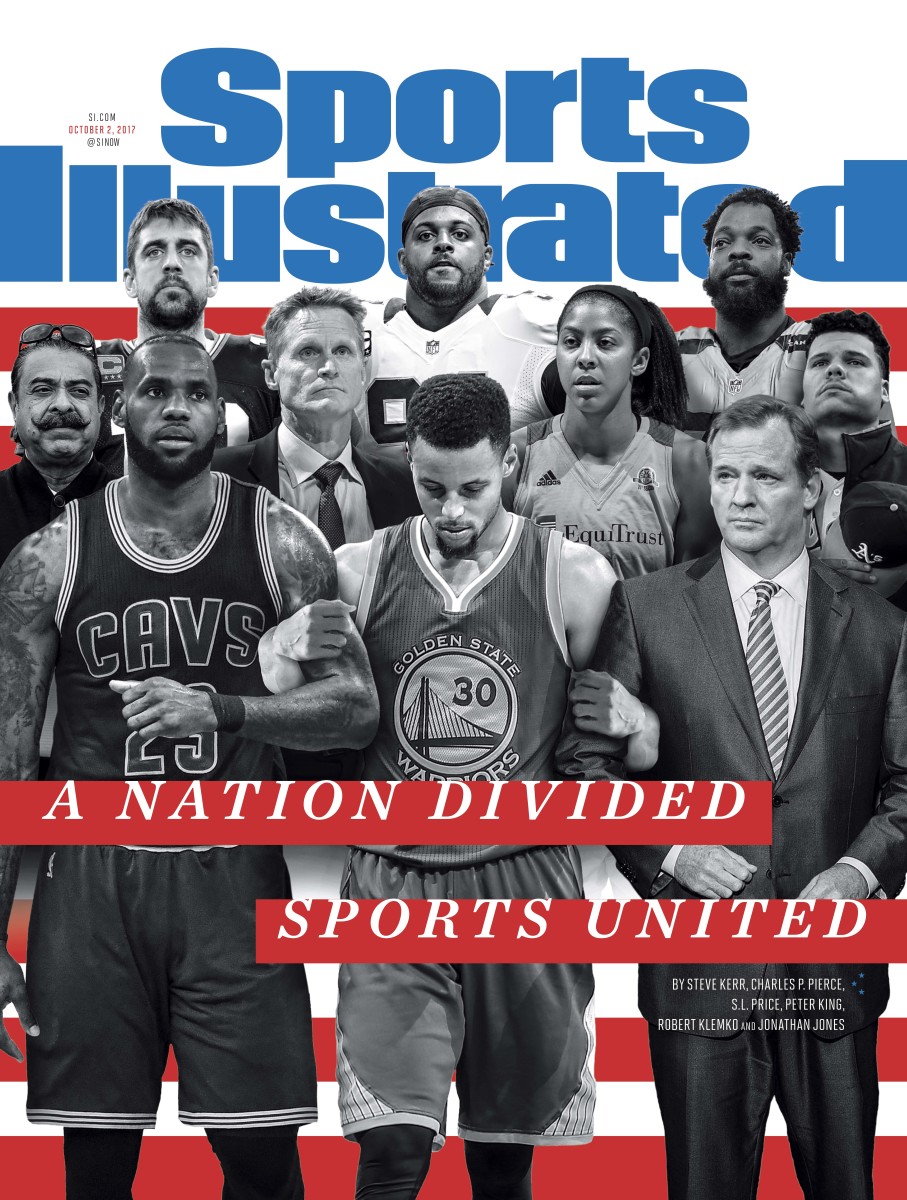
July 16, 2018
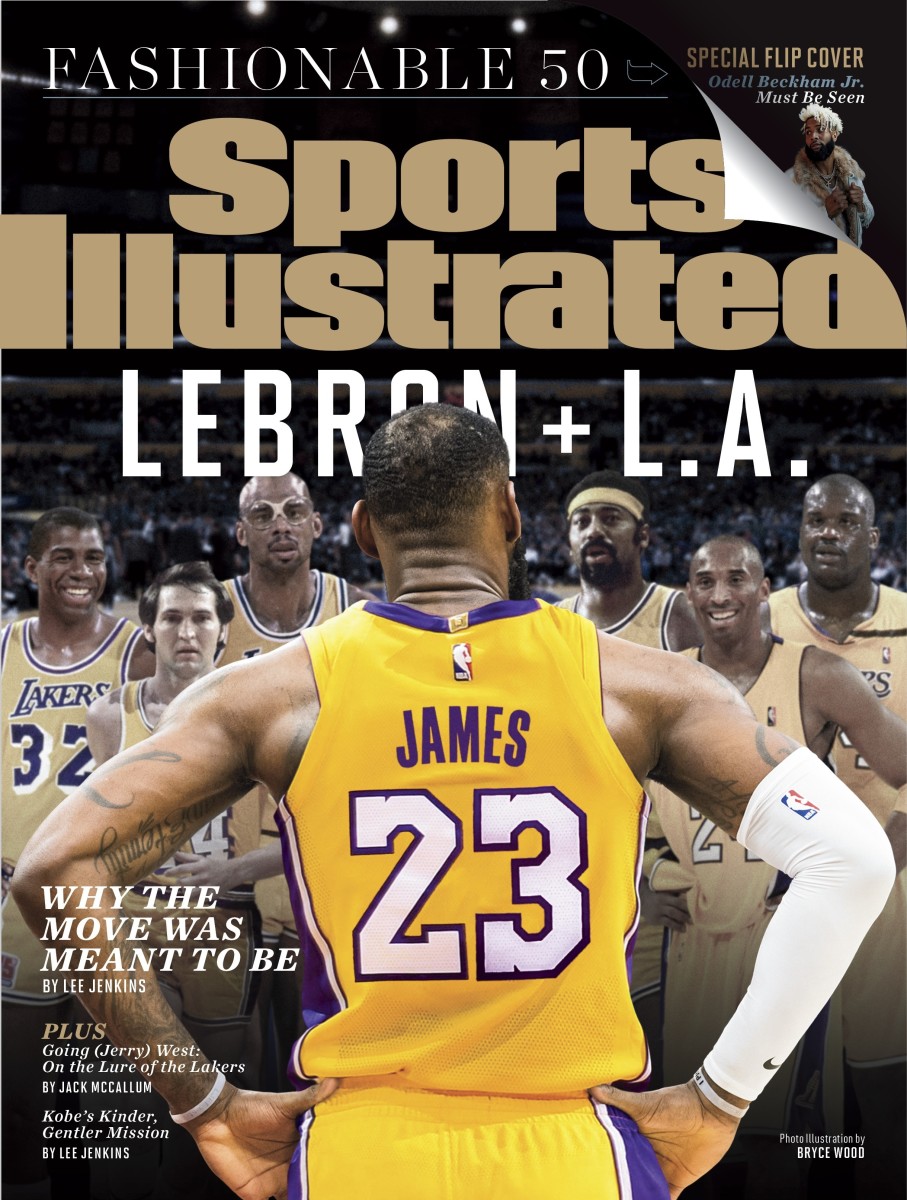
October 22, 2018
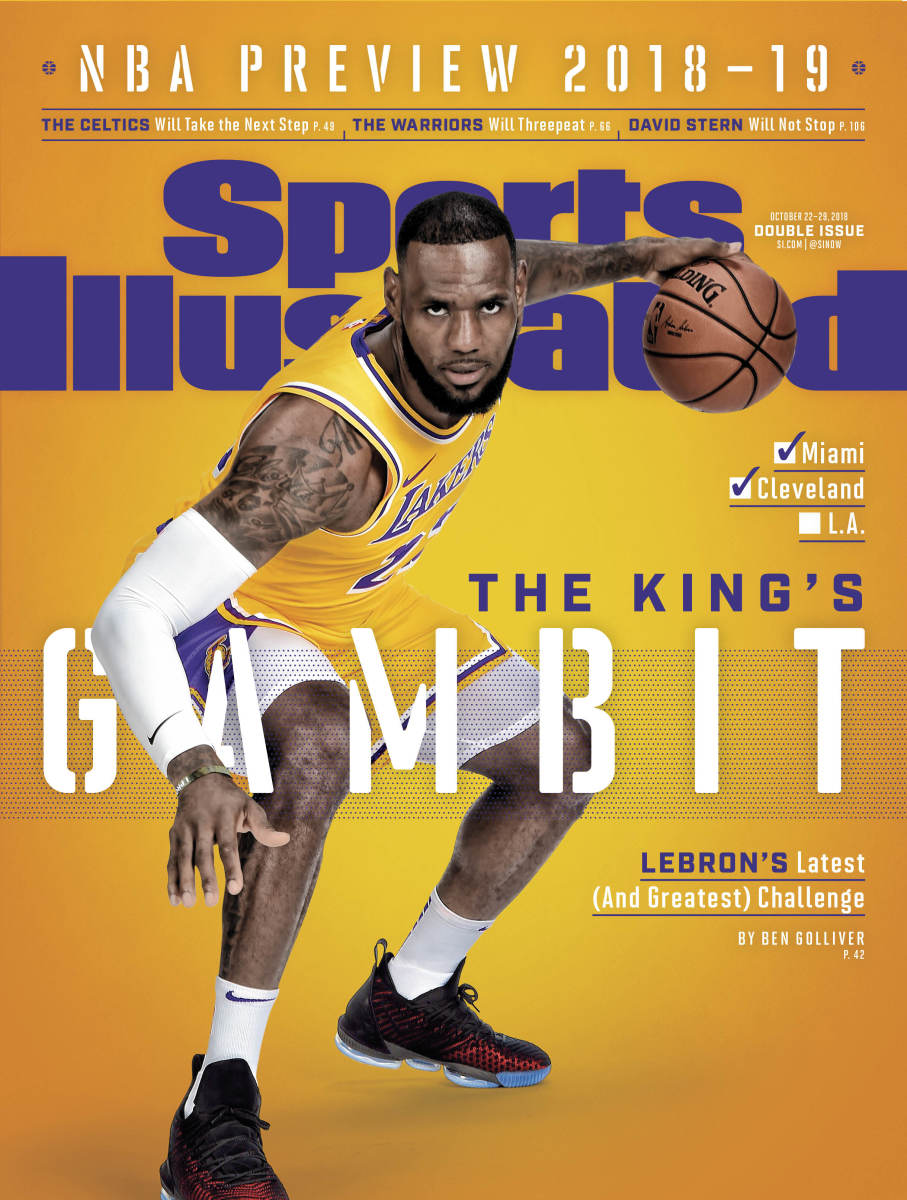
December 15, 2020
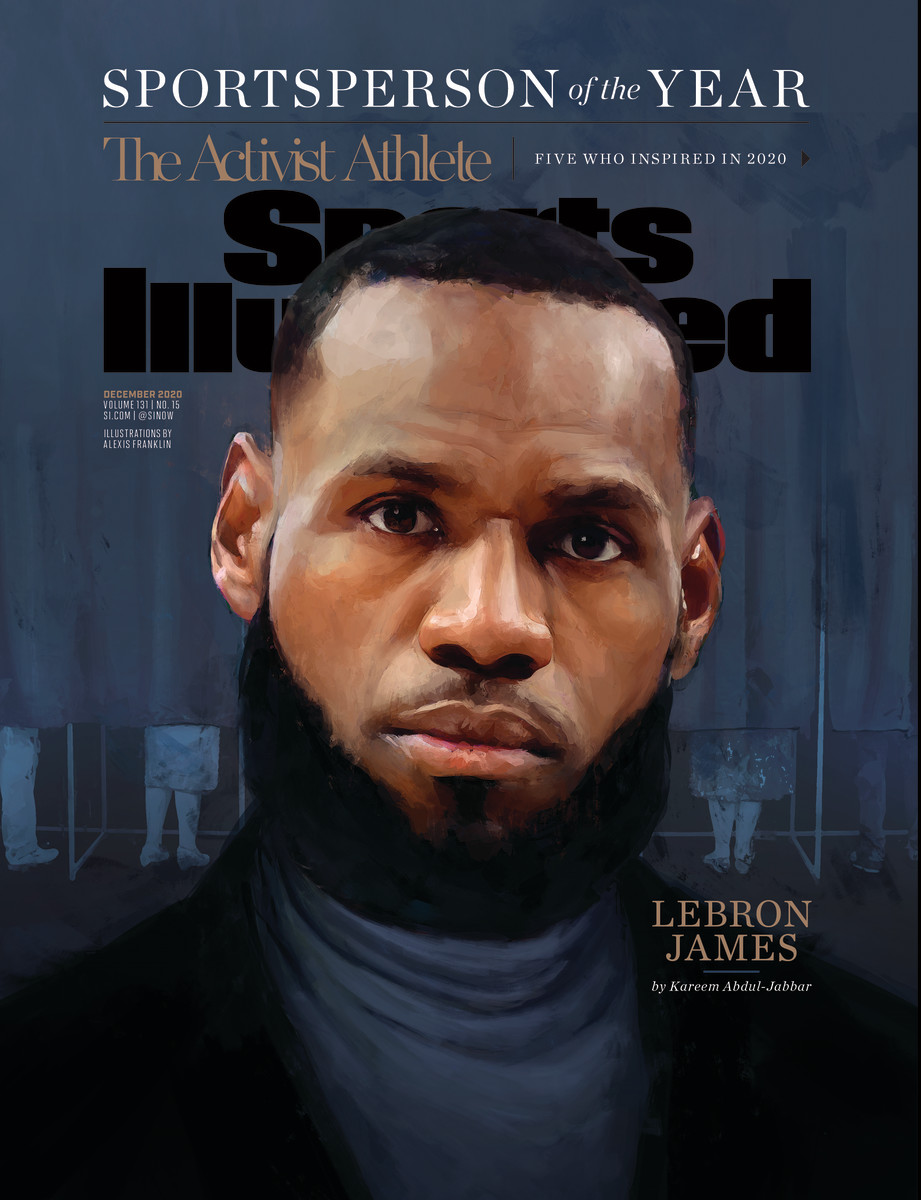
October 2022
